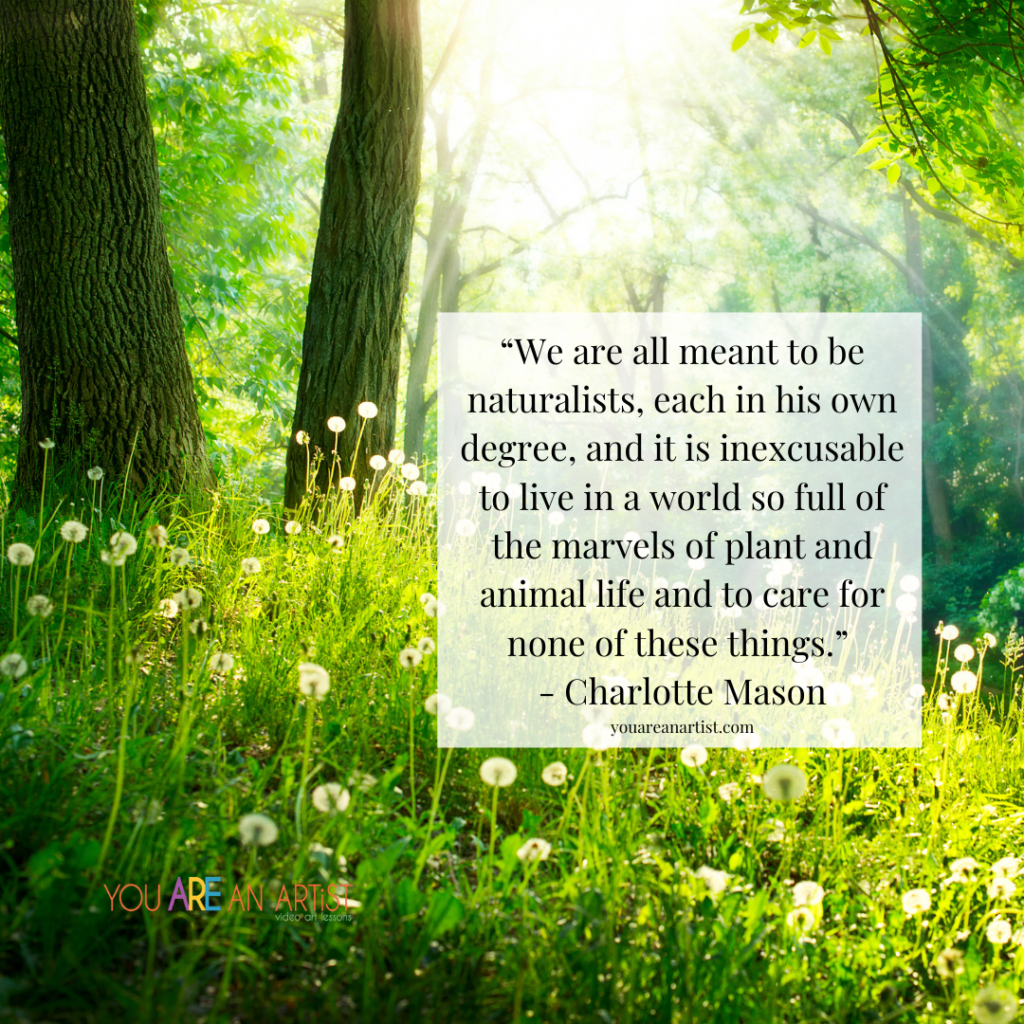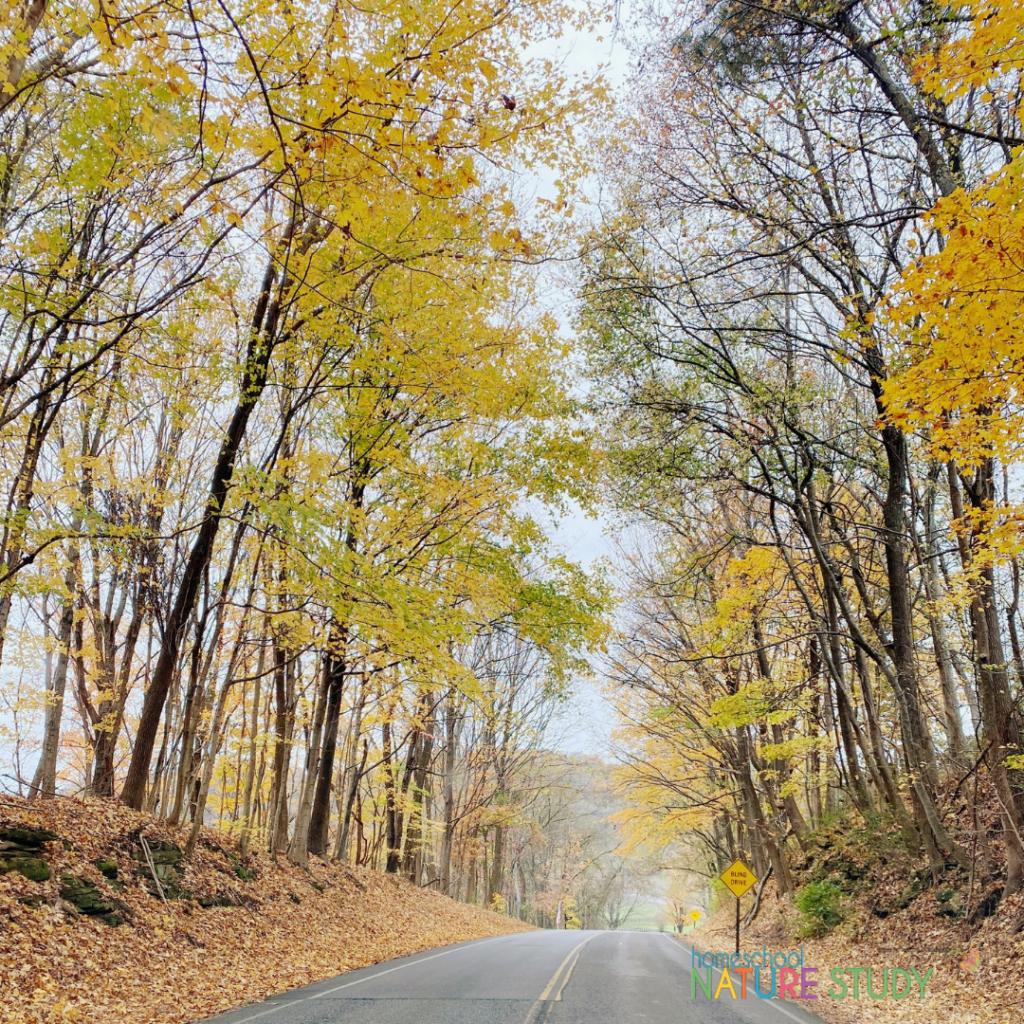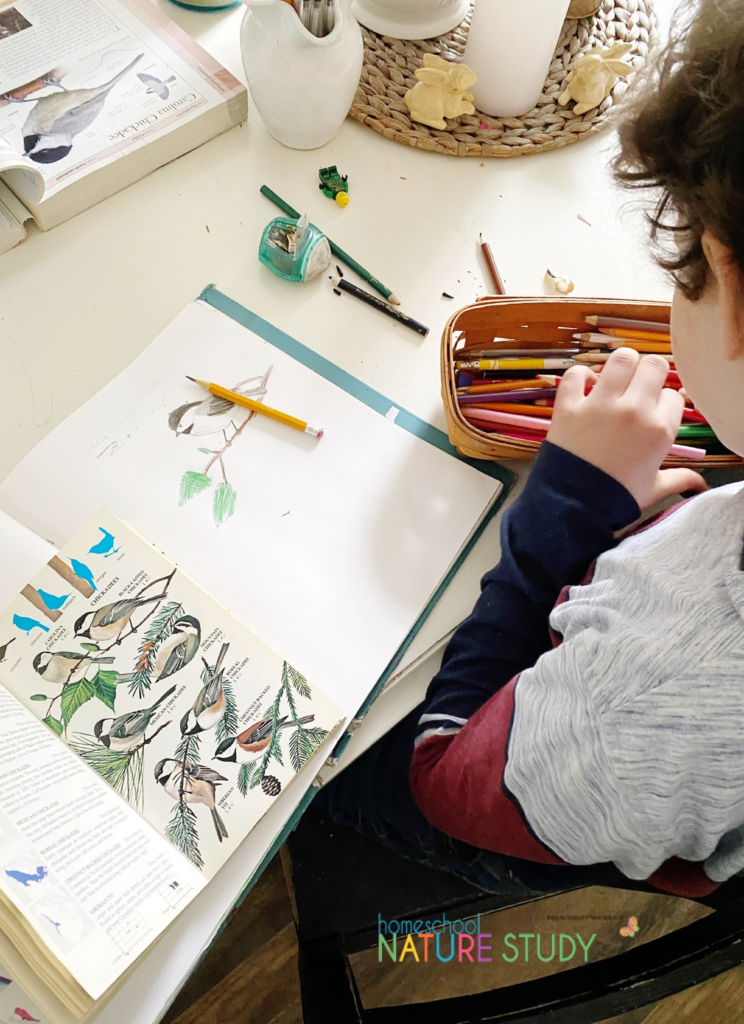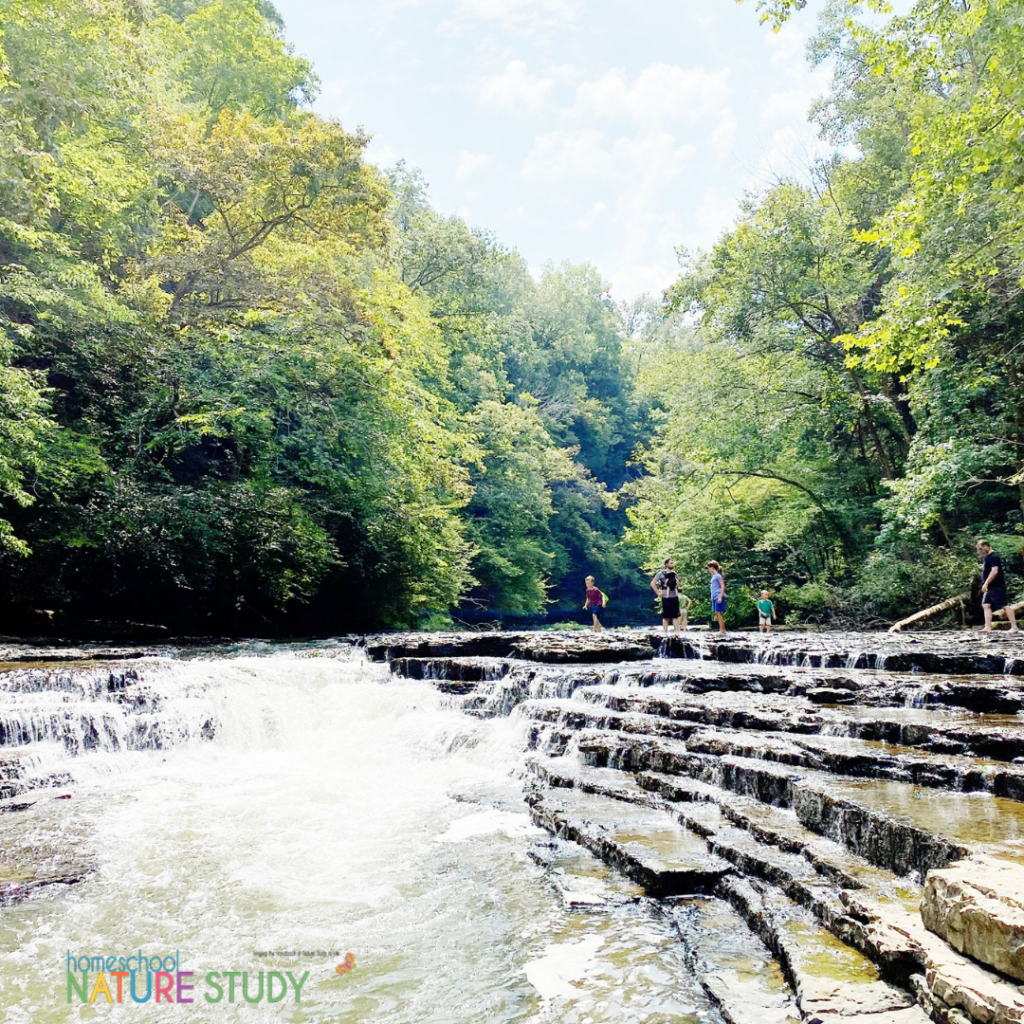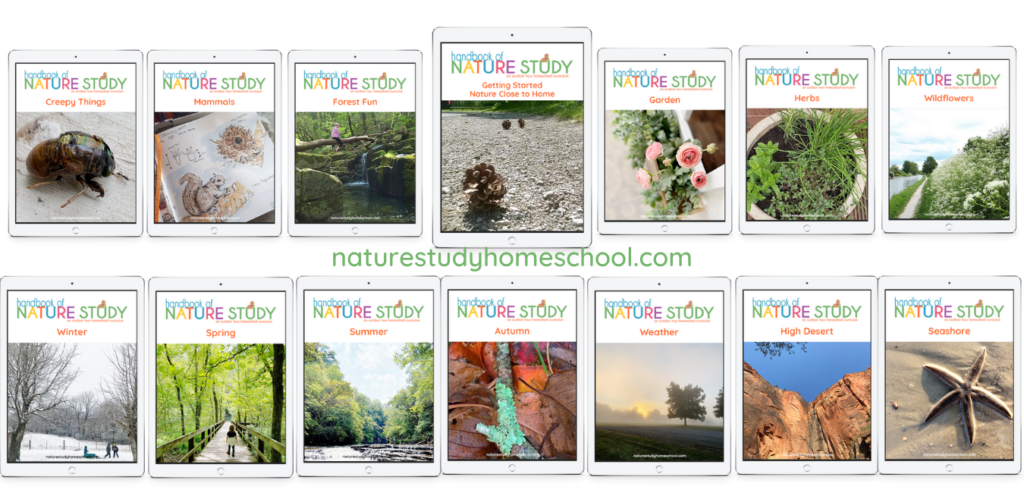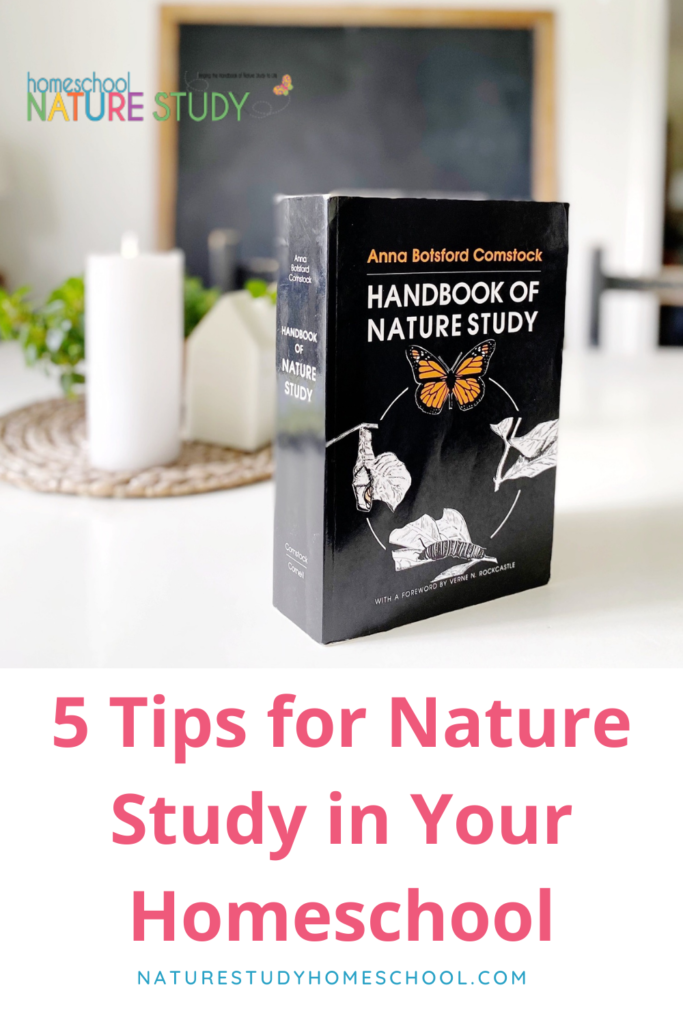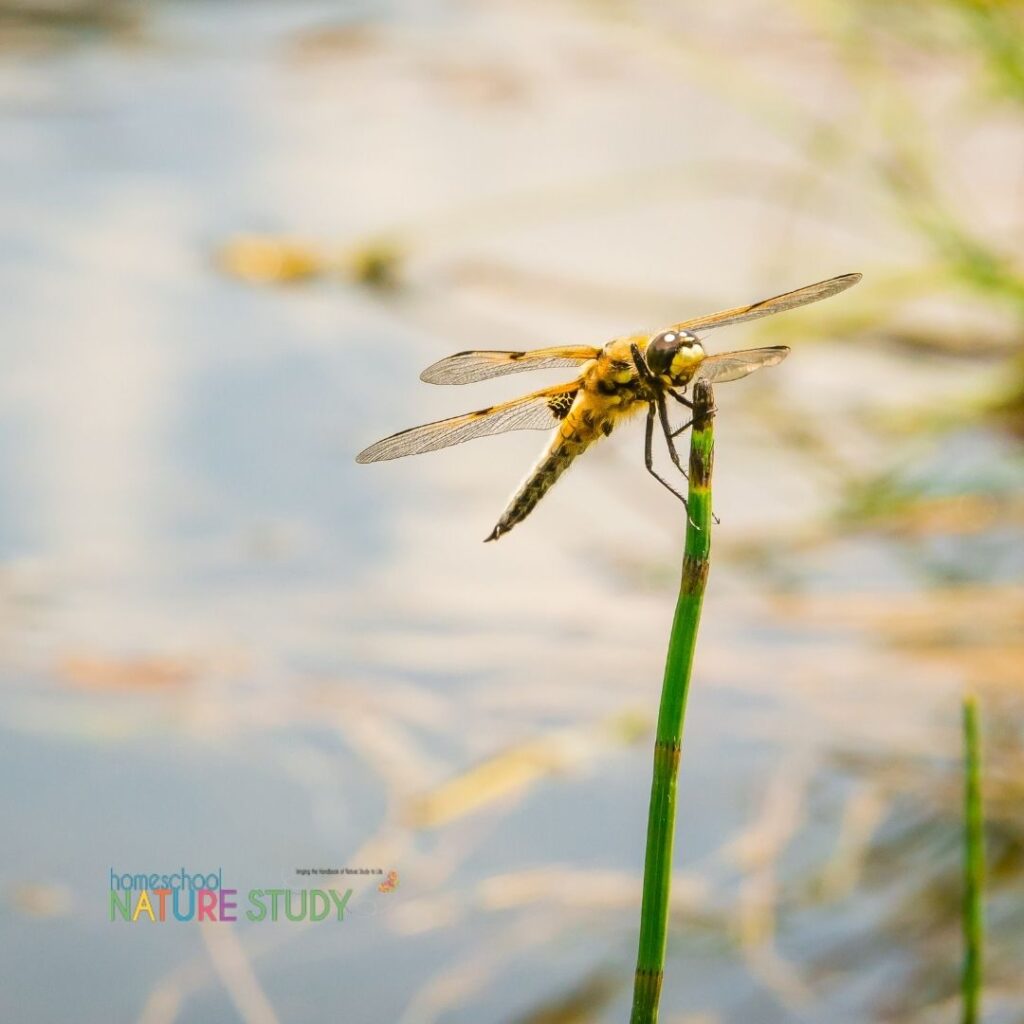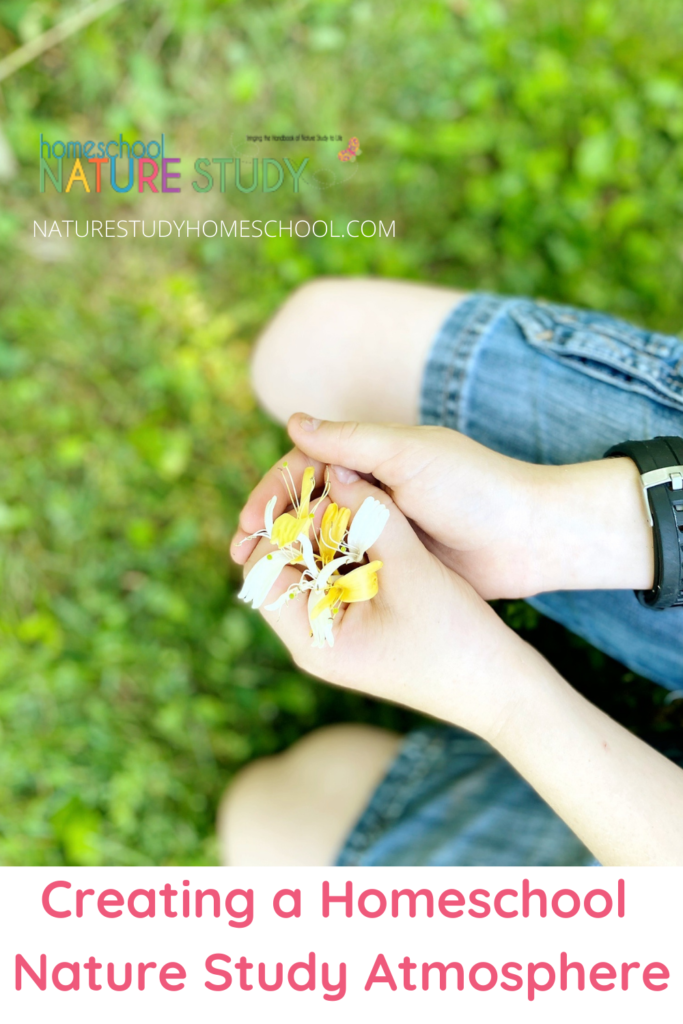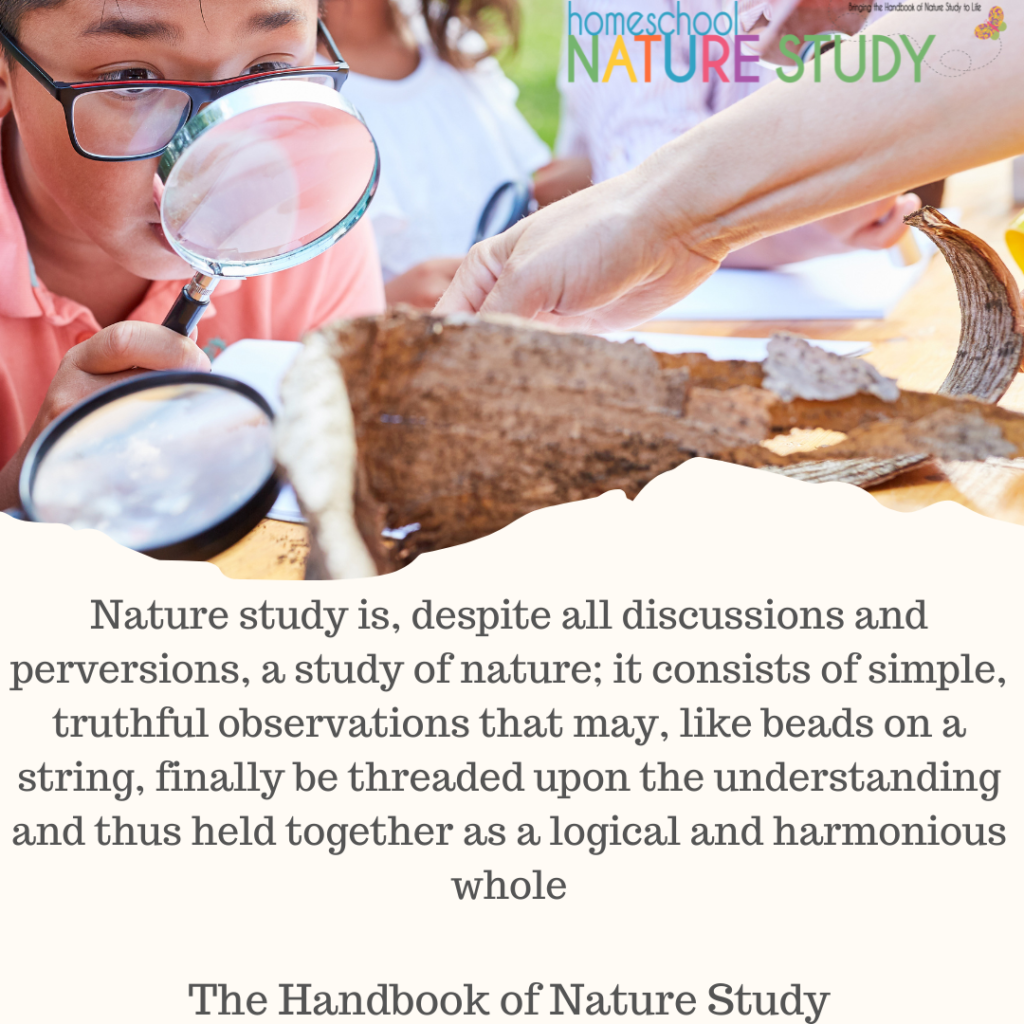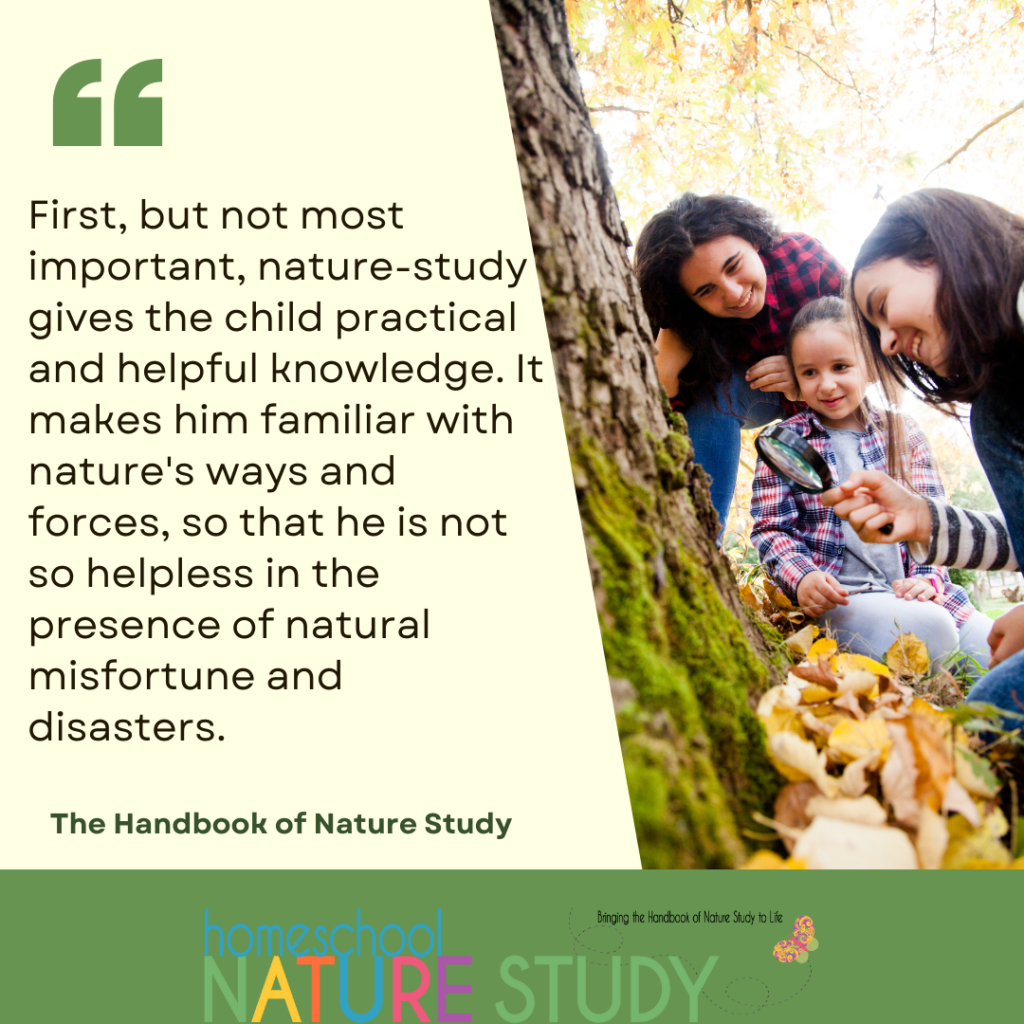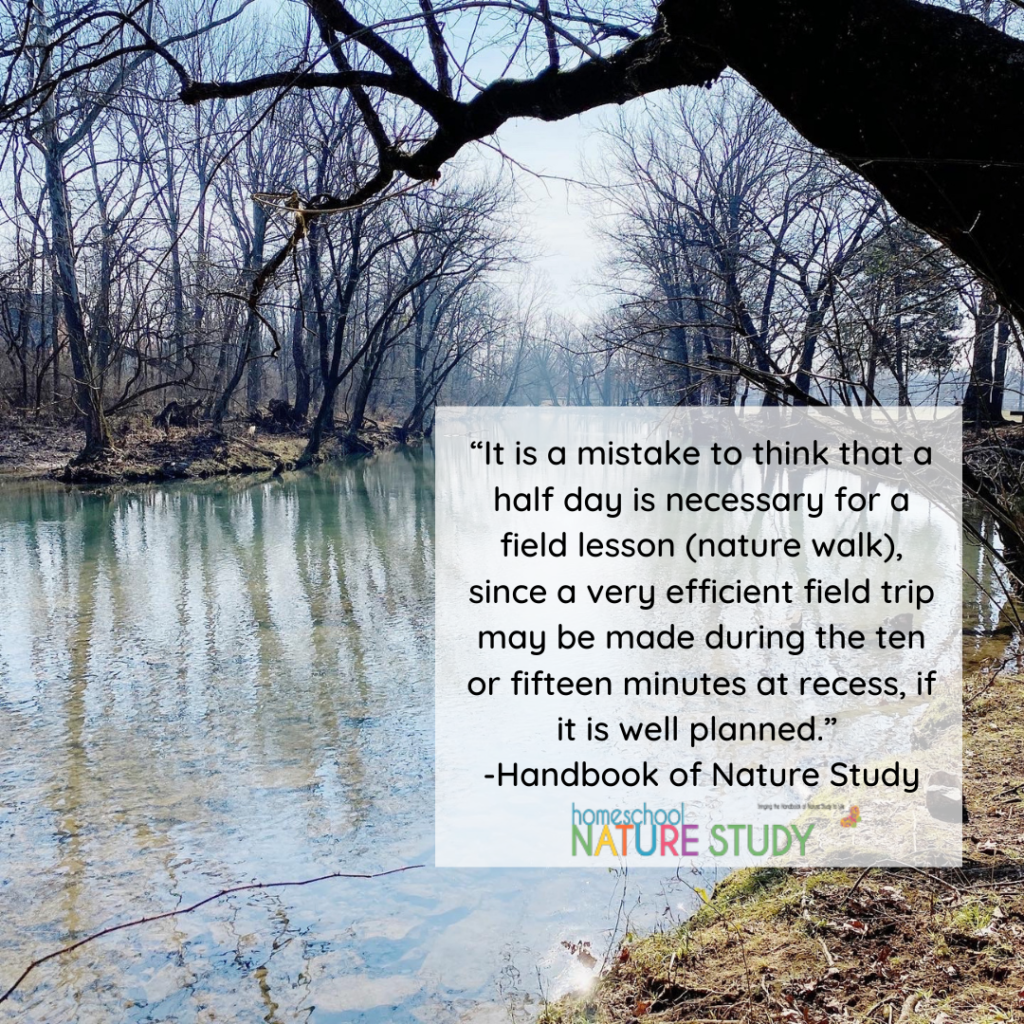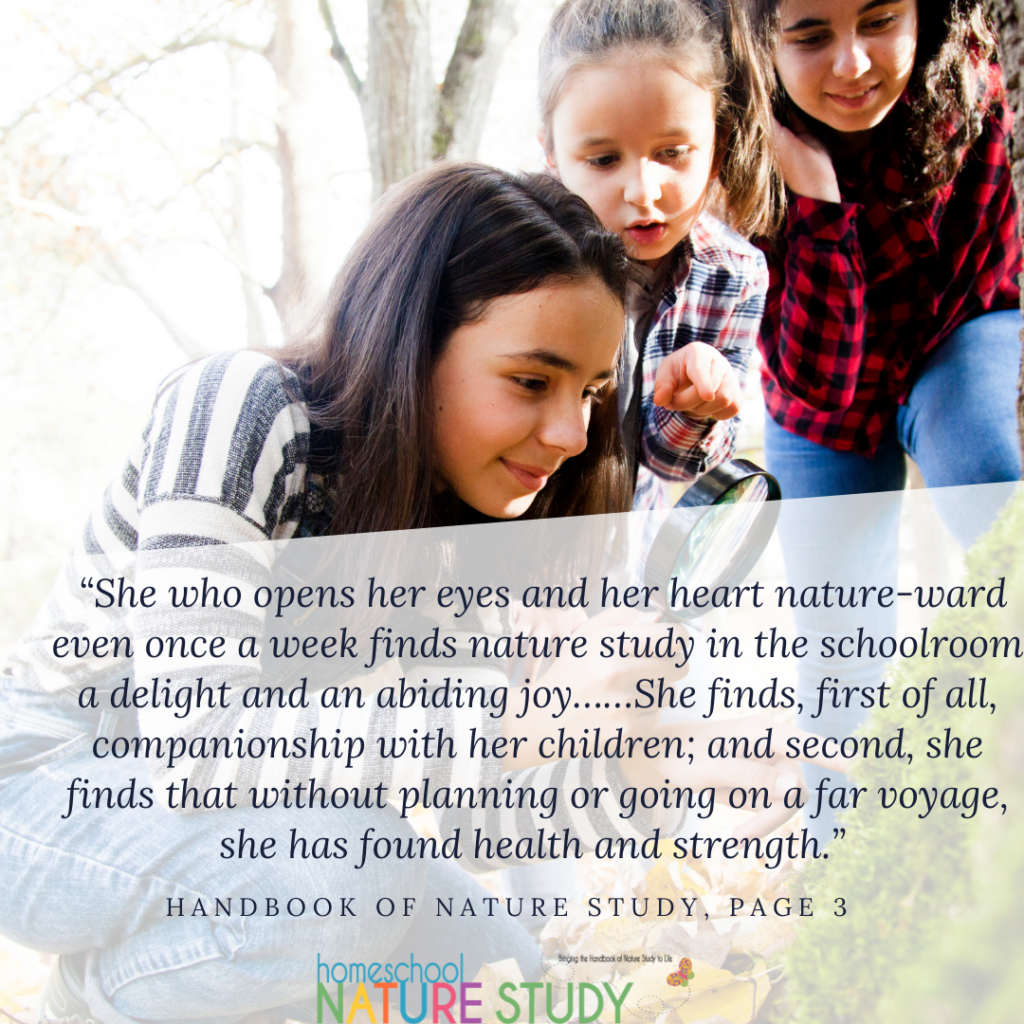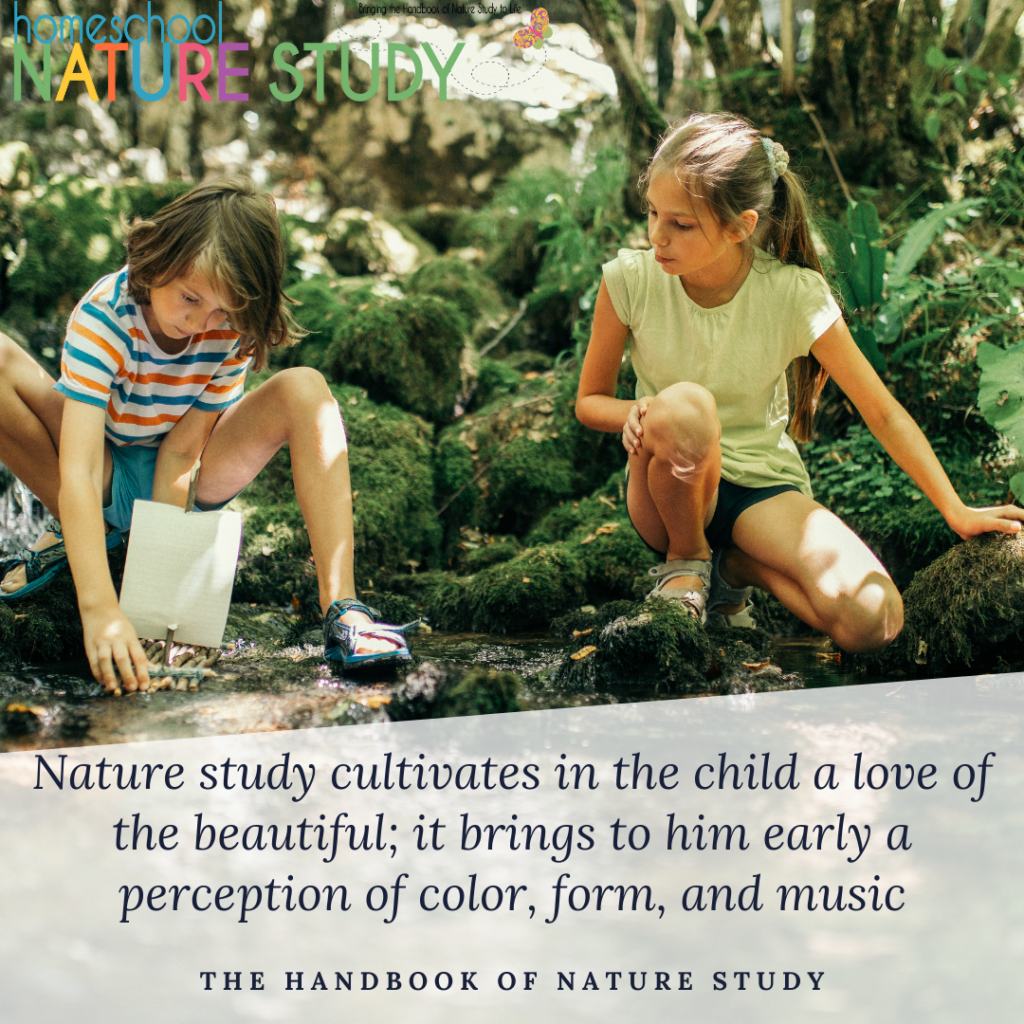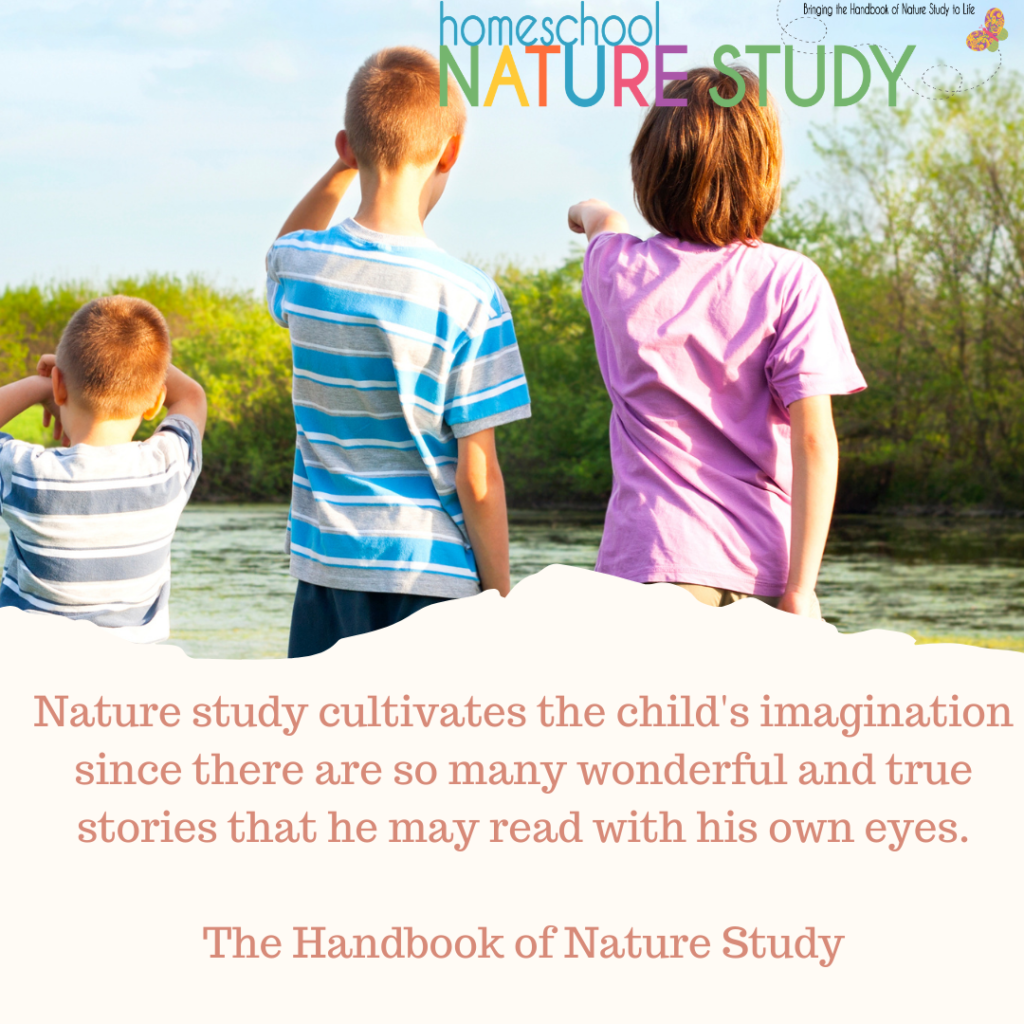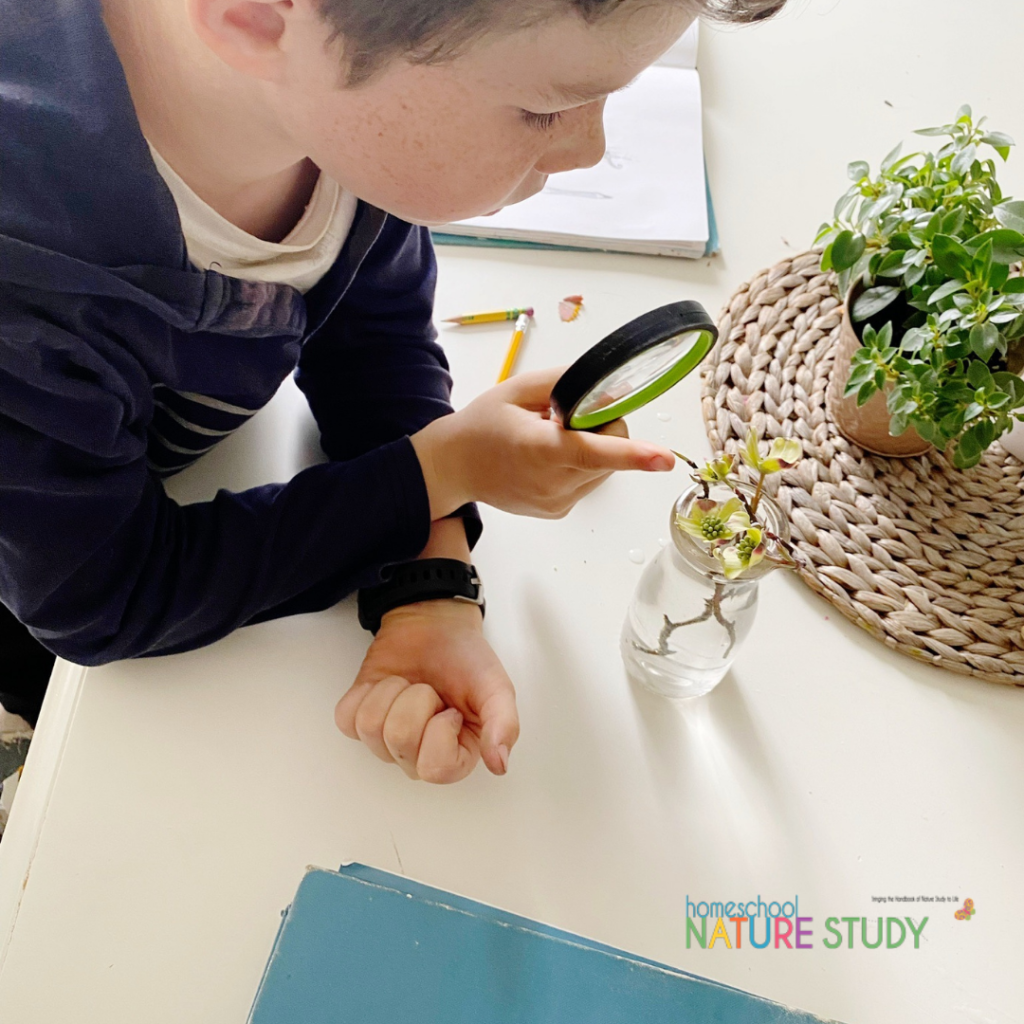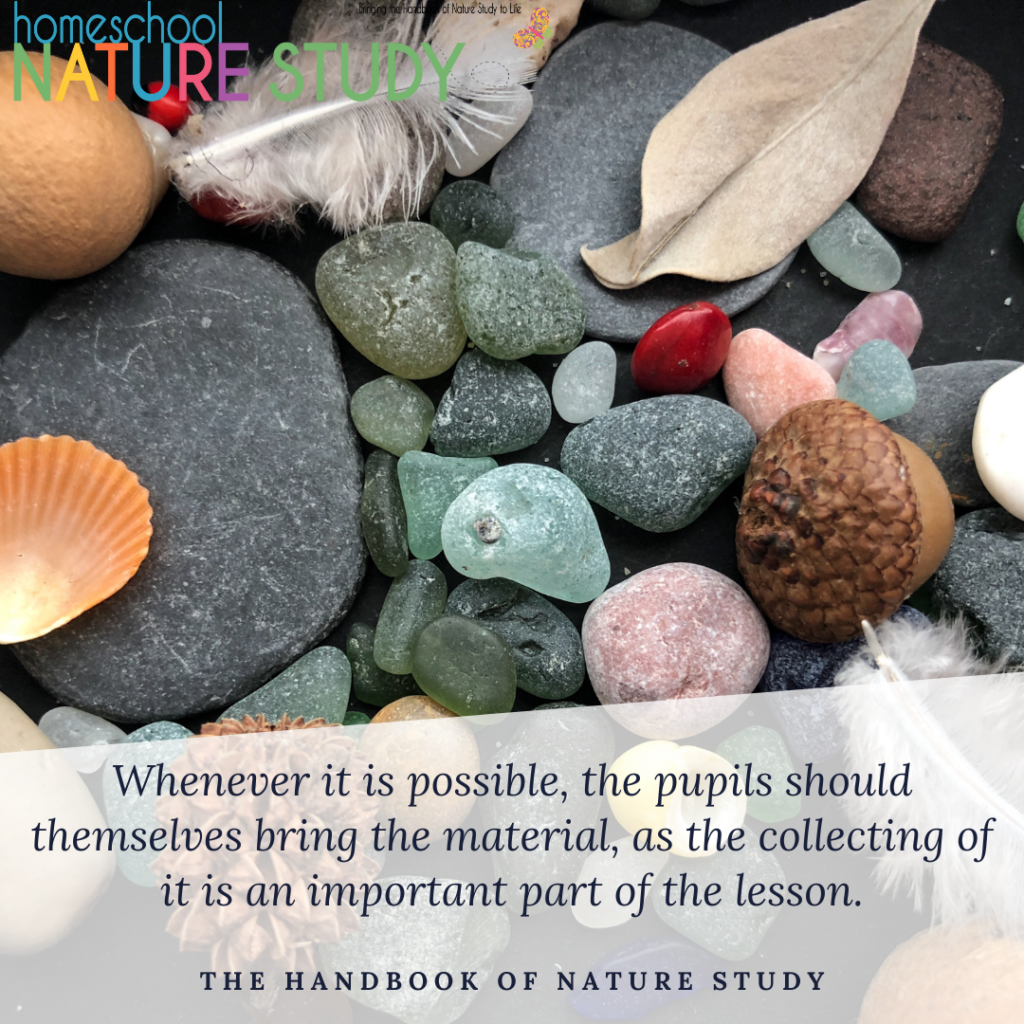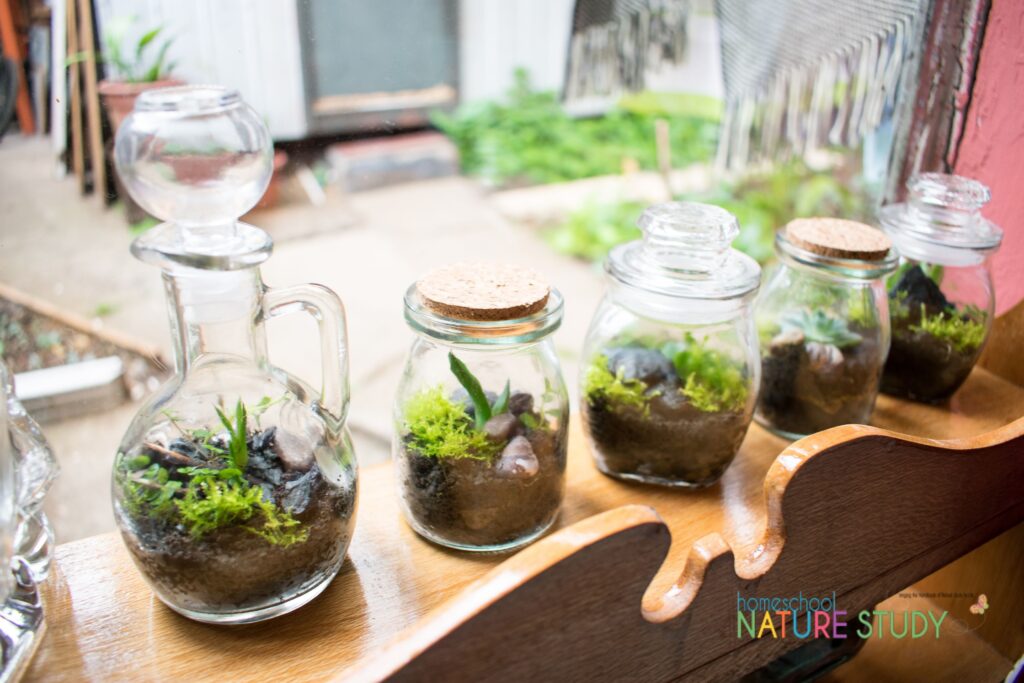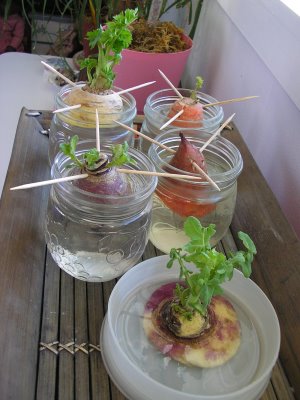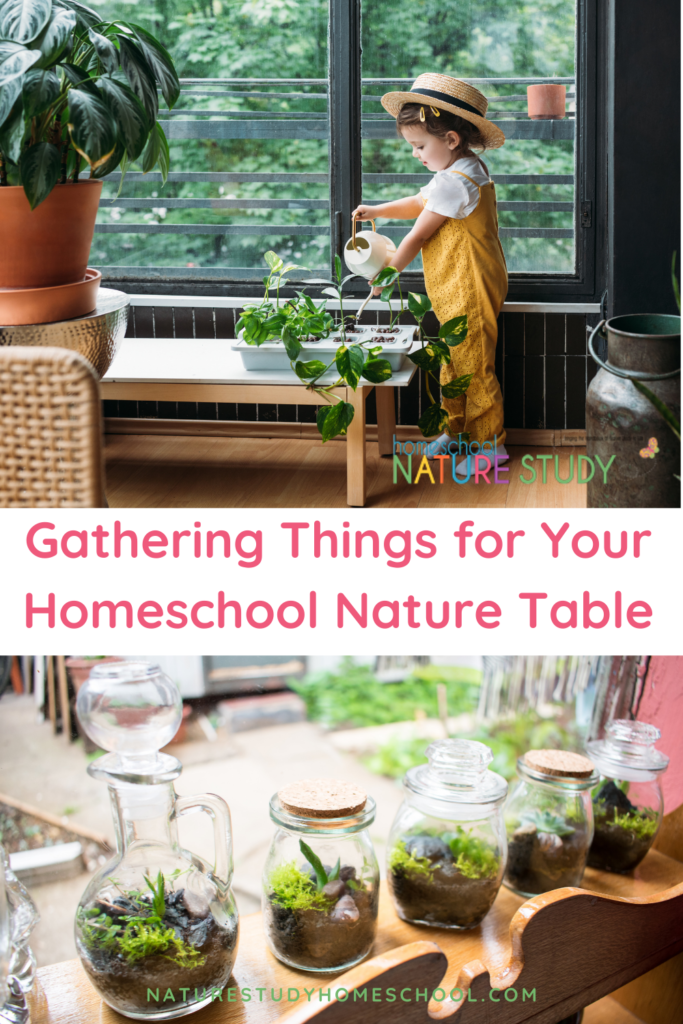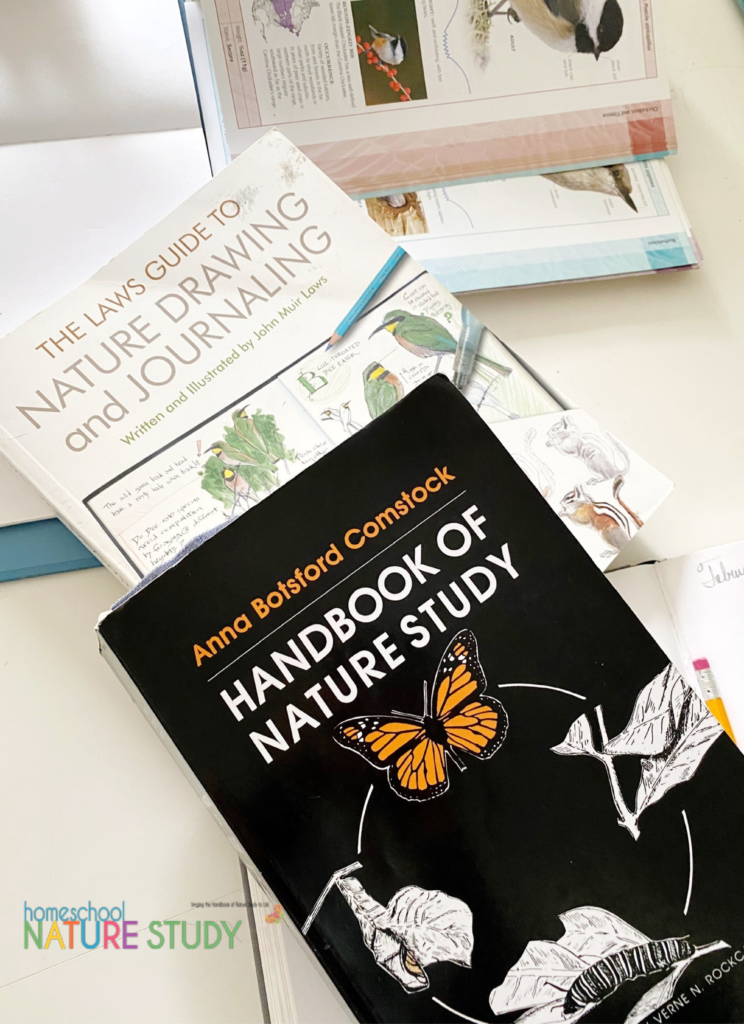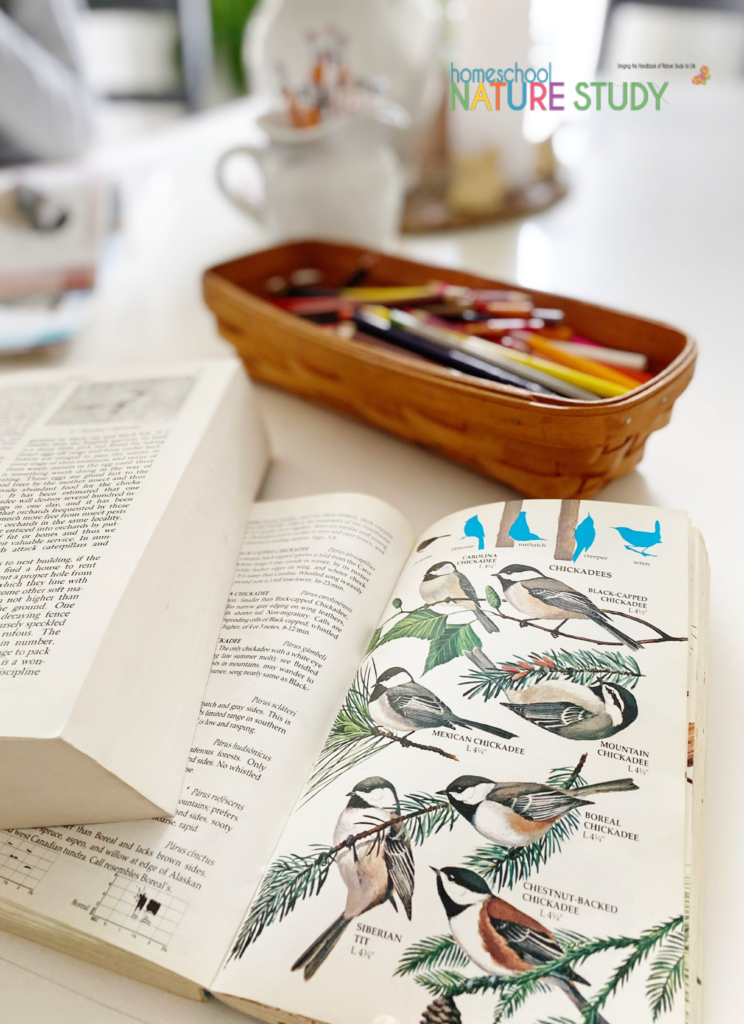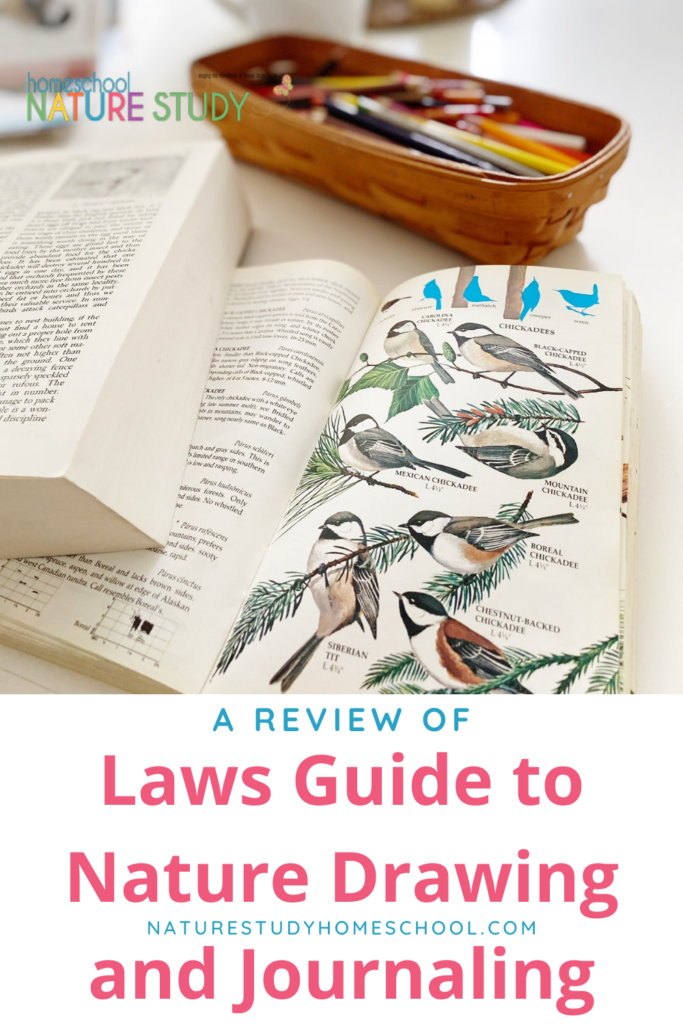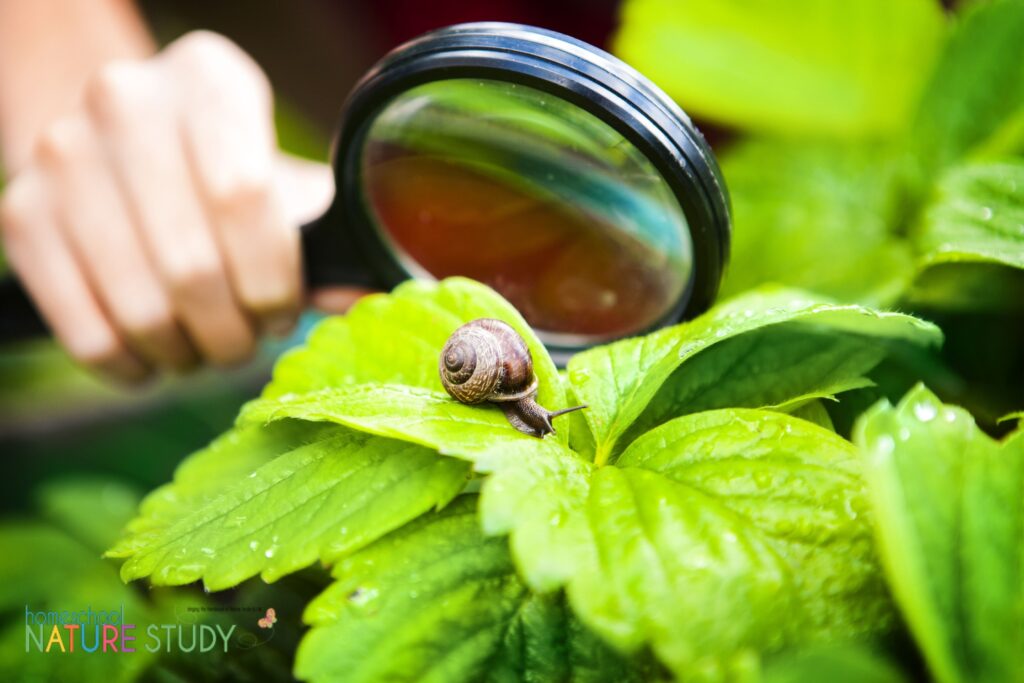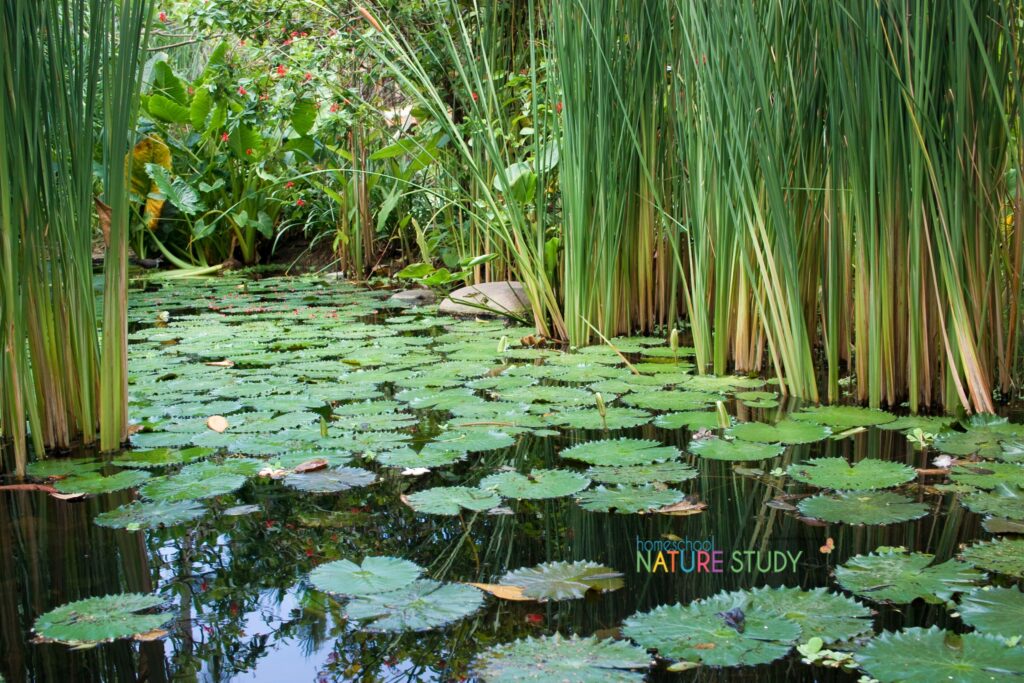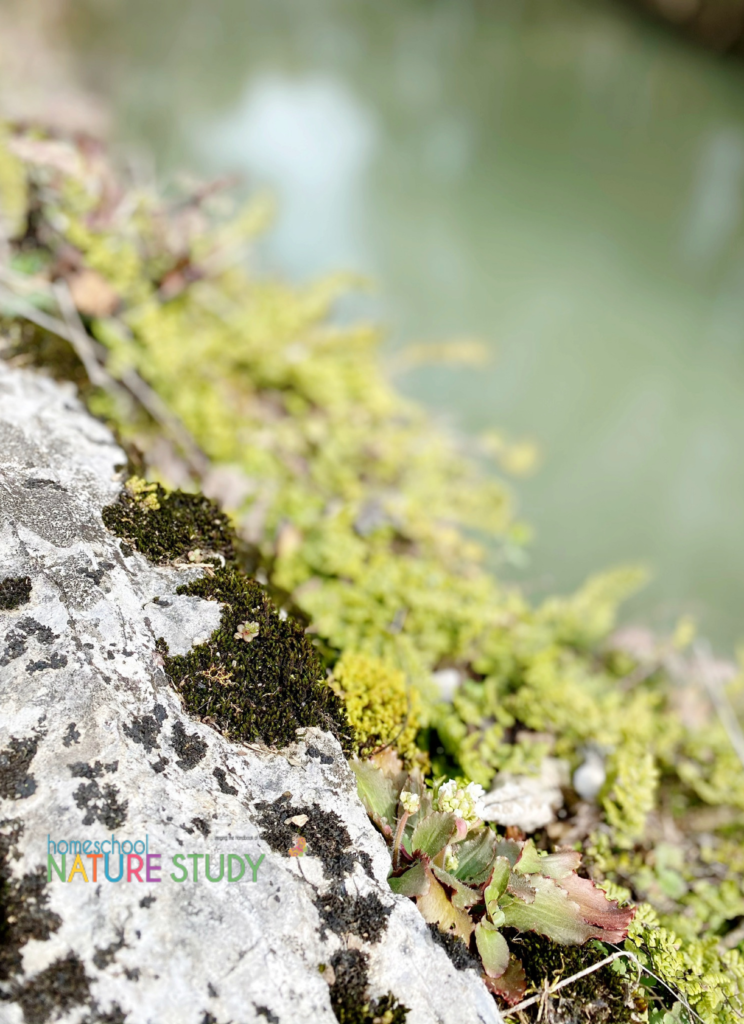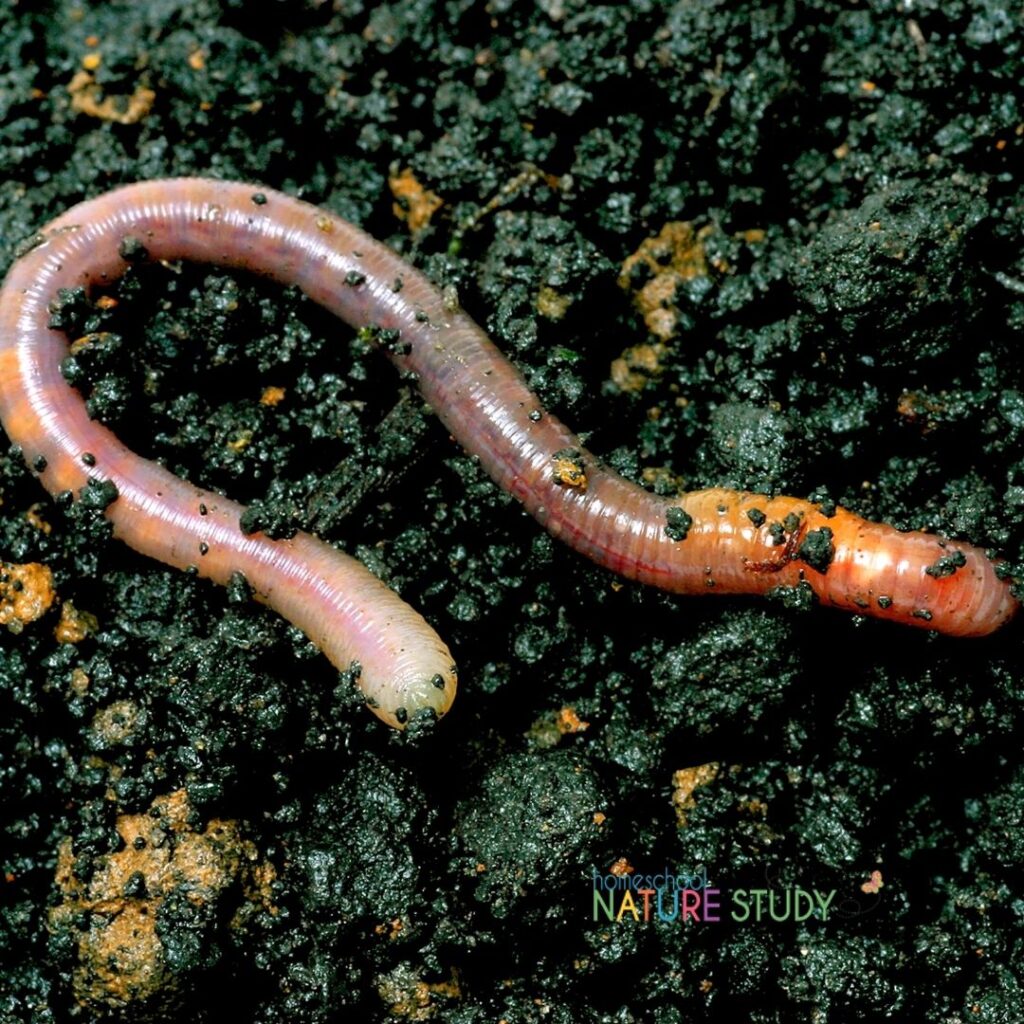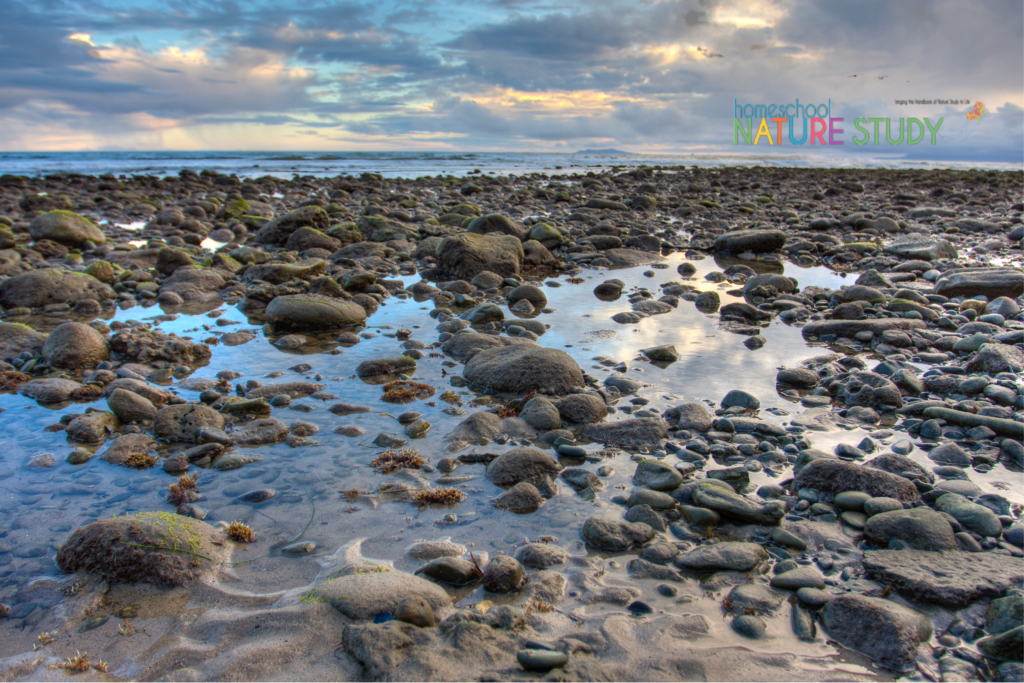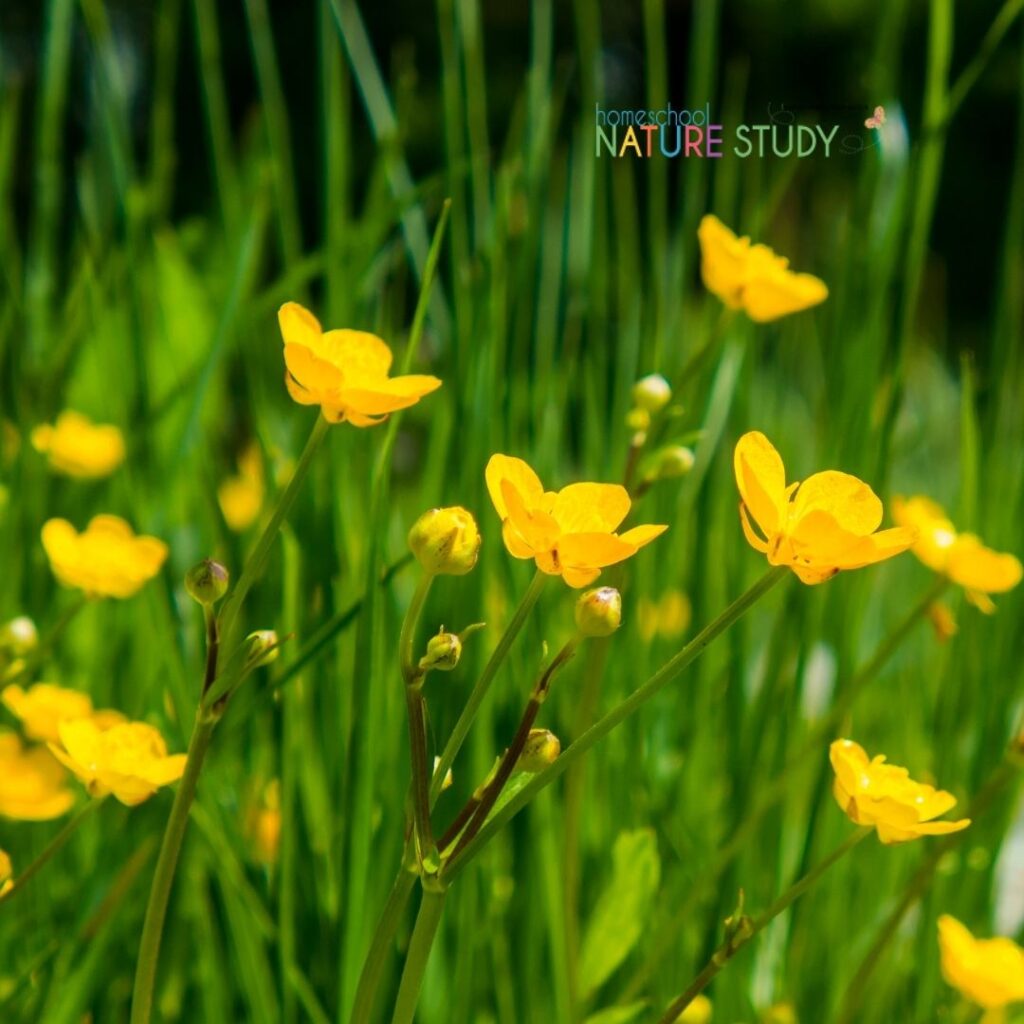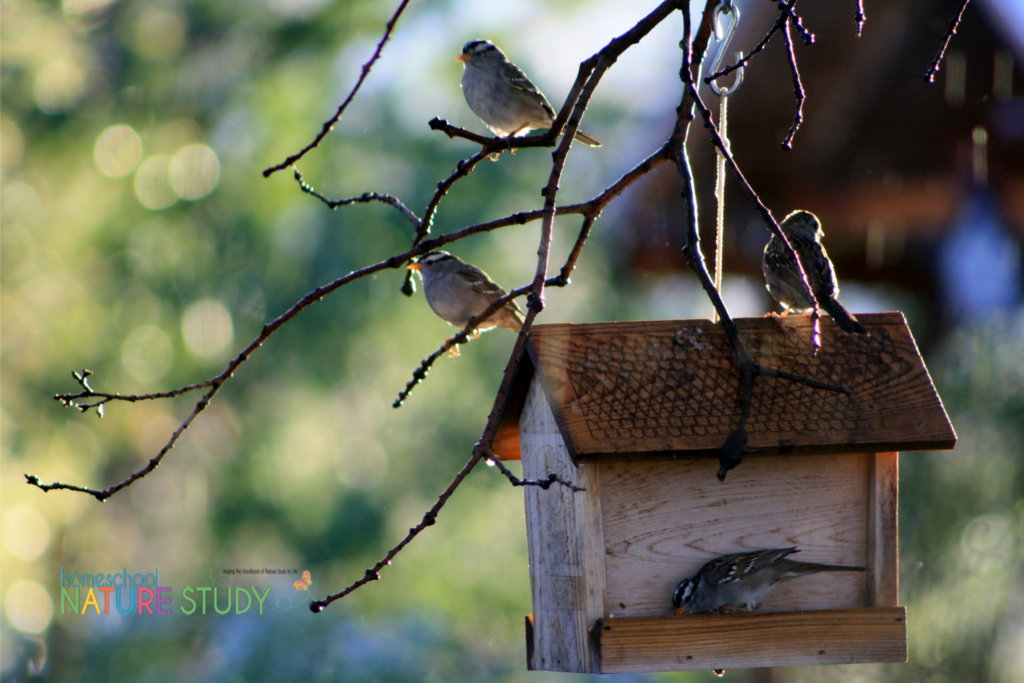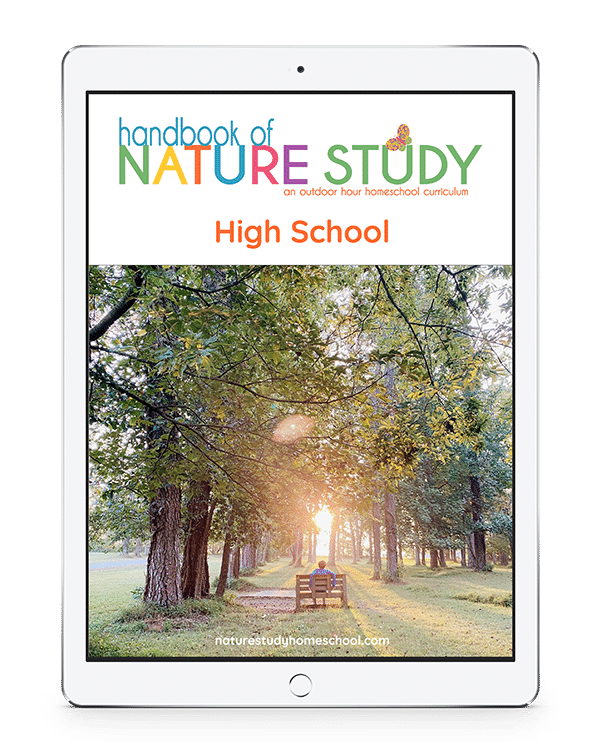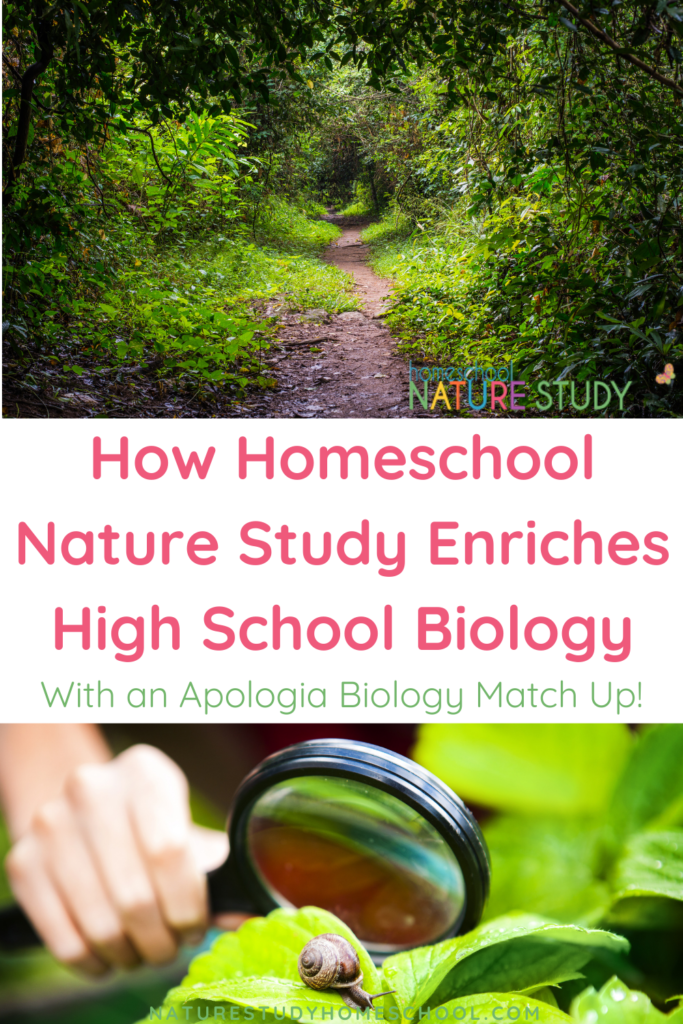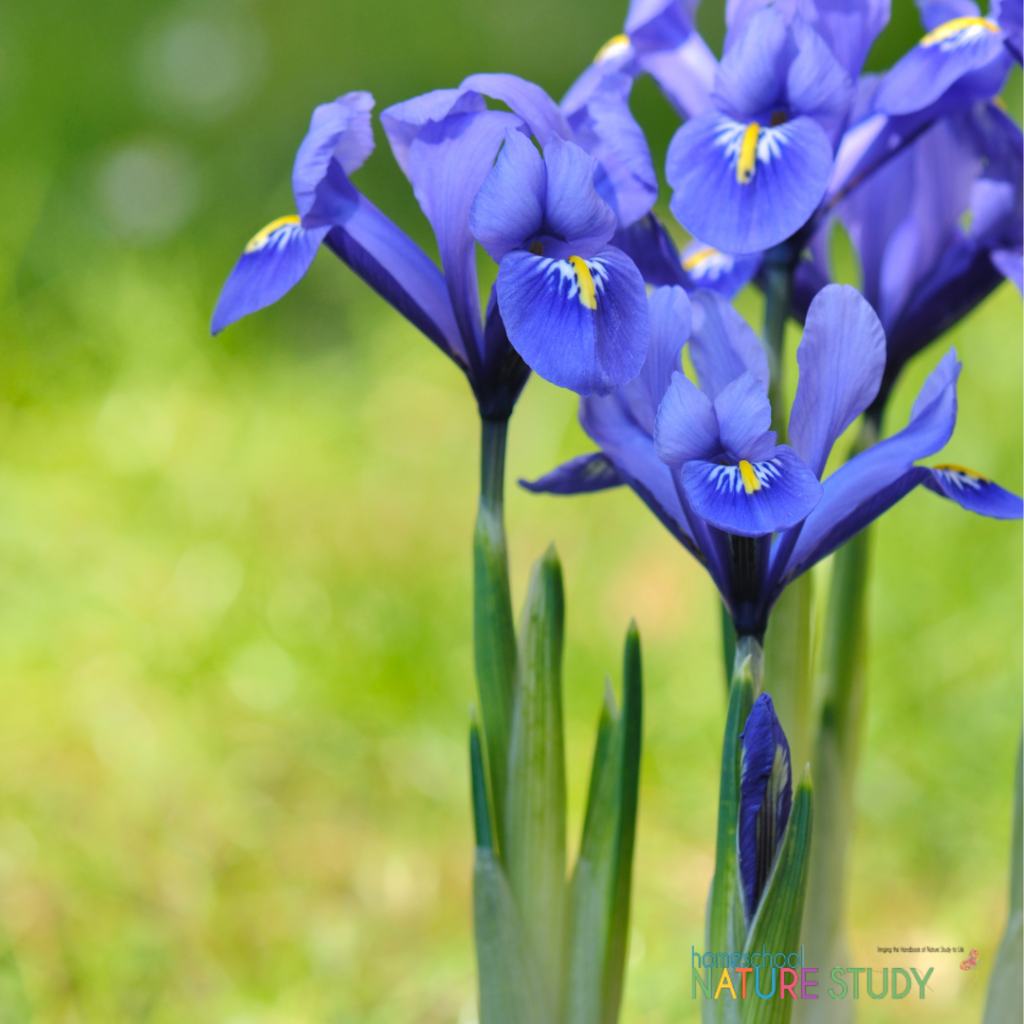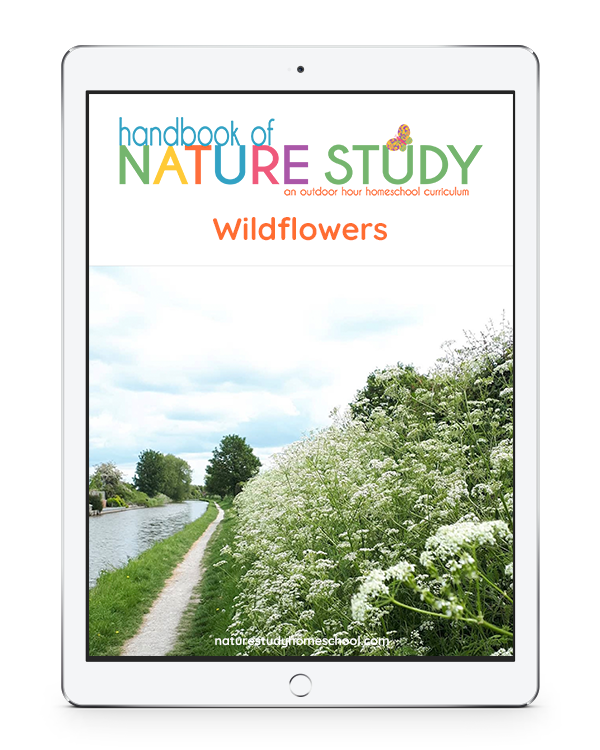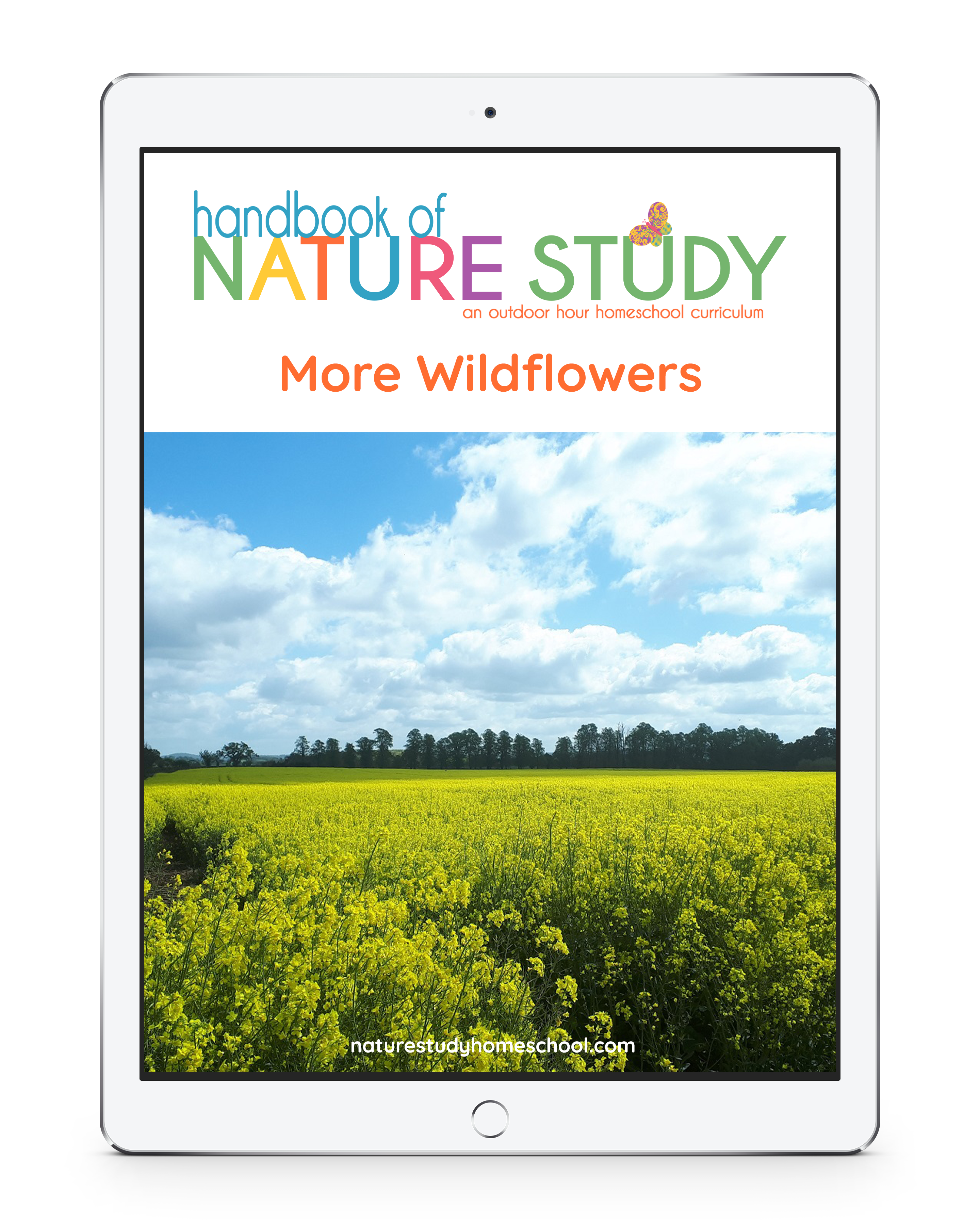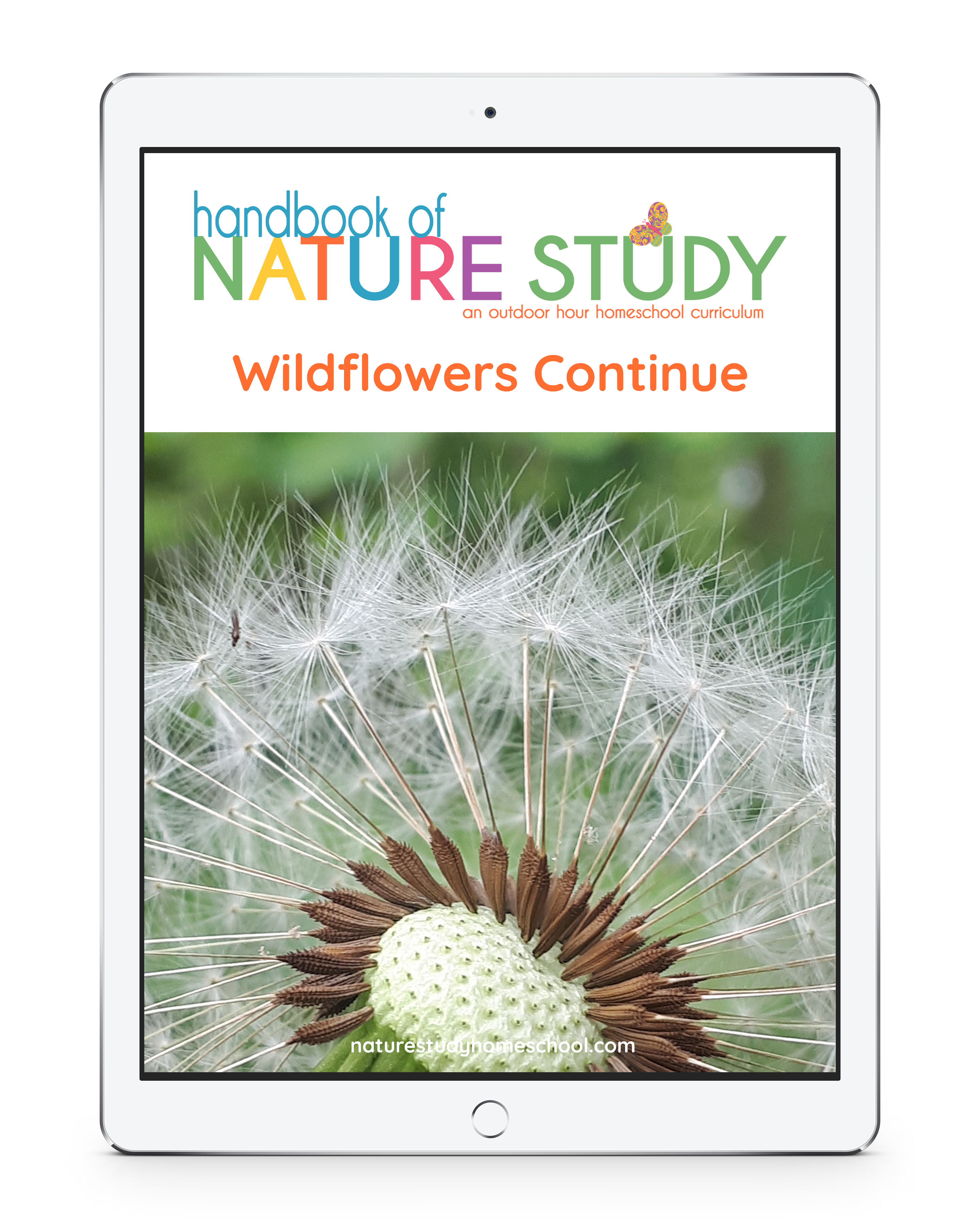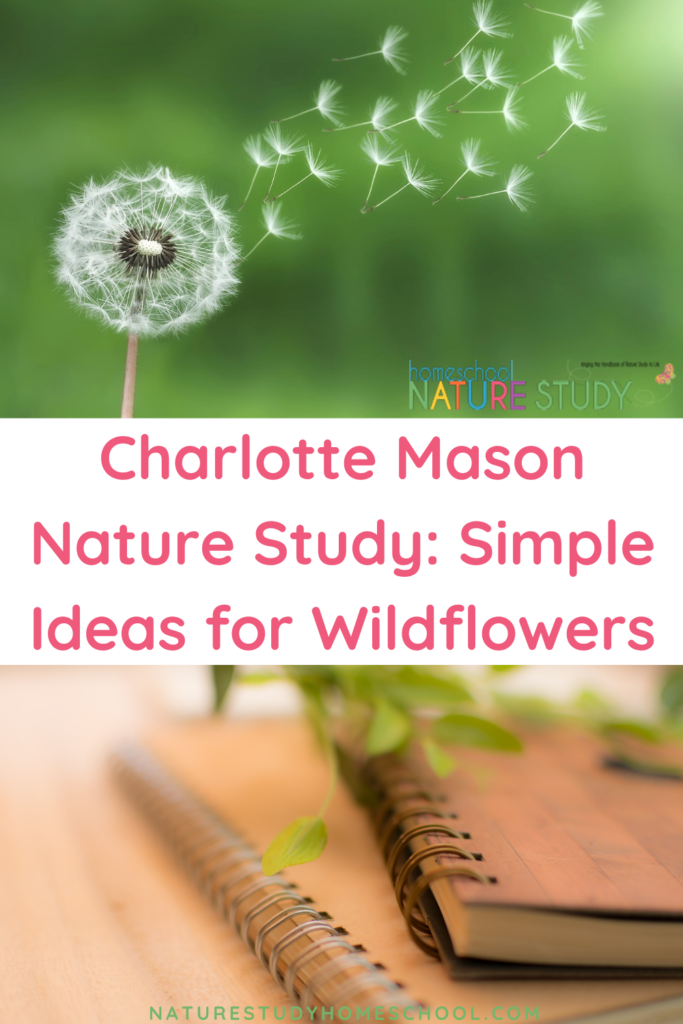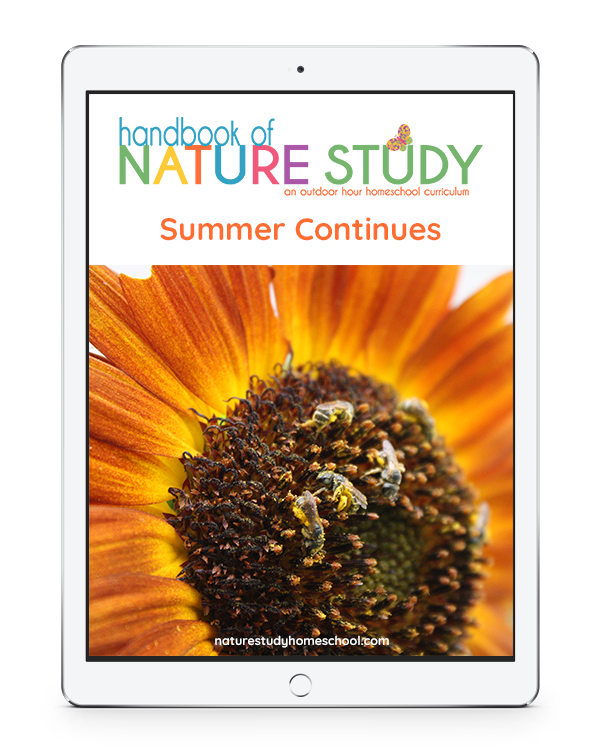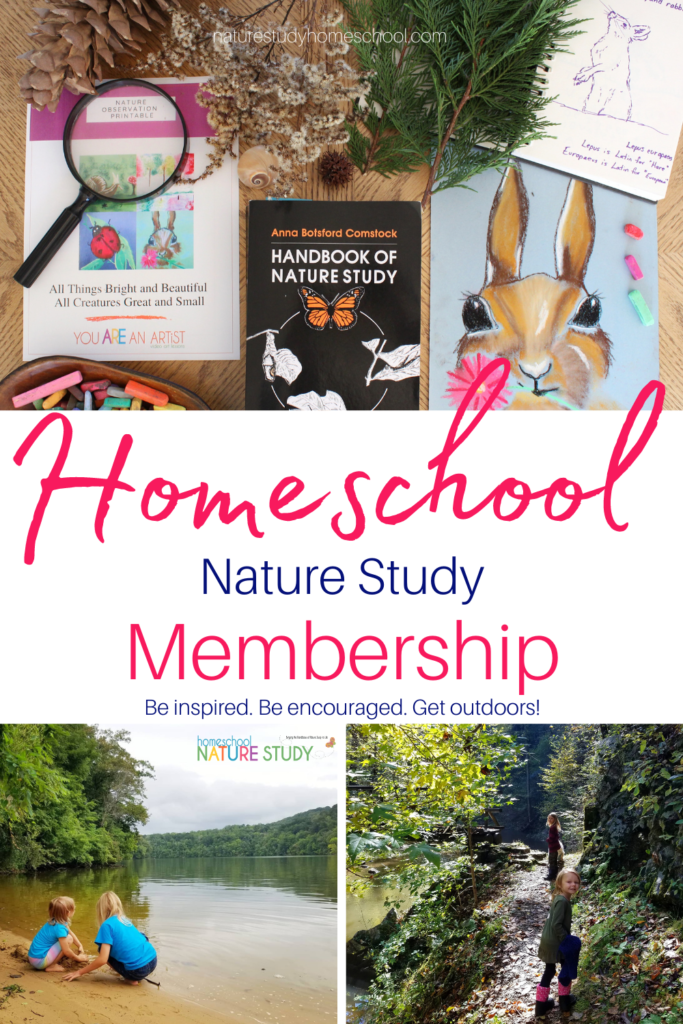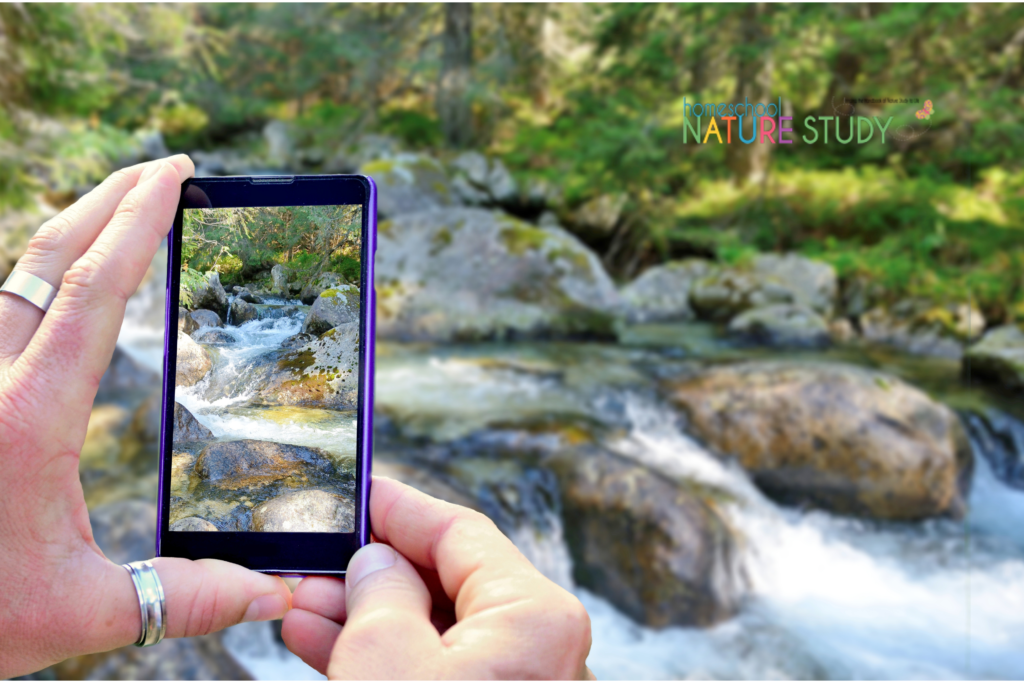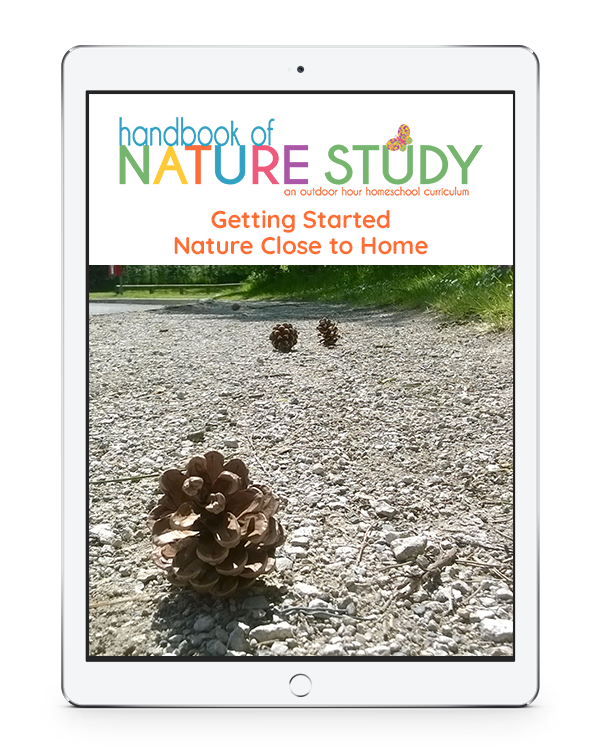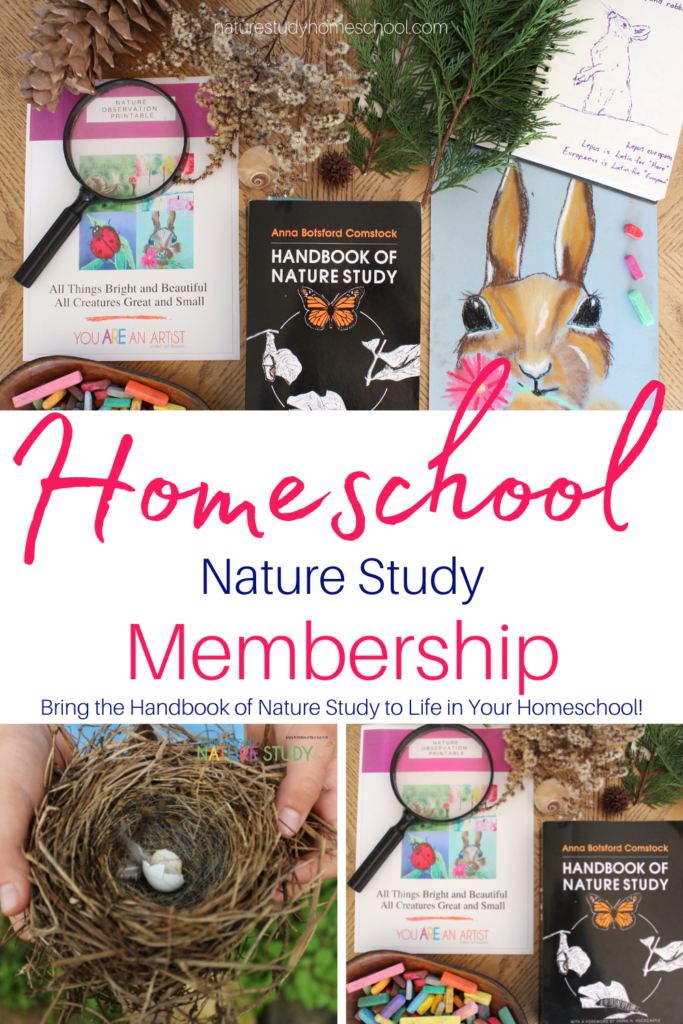There is such freedom in homeschool nature study in your own backyard and in learning what is closest to home! In your own backyard, your children will learn to observe, to write about their experiences, to draw their treasures, to be patient, to imagine, and to explore. You don’t need a special textbook or kit to get started.
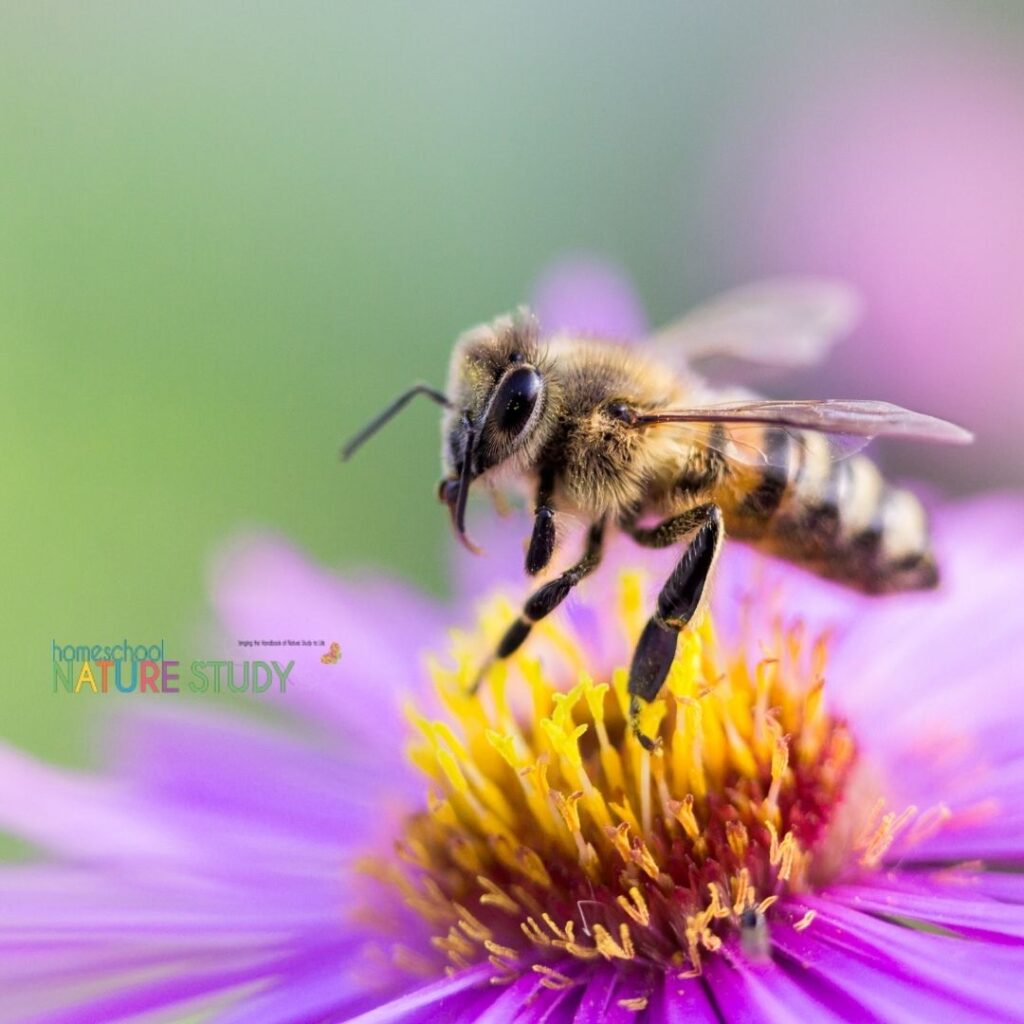
In the book Last Child in the Woods, the author makes the point several times that today’s science textbooks and programs are missing the mark. Many, many young students know more about the tropical rainforests and volcanoes of the world than they know about their own backyards.
Homeschool Nature Study in Your Own Backyard: Learn What is Closest to Home
Is there a better way to introduce our children to the world of science? Yes, but it may mean we have to get dirty. We will need to spend time outdoors *with* our children and look at things through their eyes. It may mean that teaching science doesn’t follow a straight path or a certain scope and sequence. It changes science or nature study in your own backyard into more of a way of life rather than a school subject to be checked off your “to do” list each week.
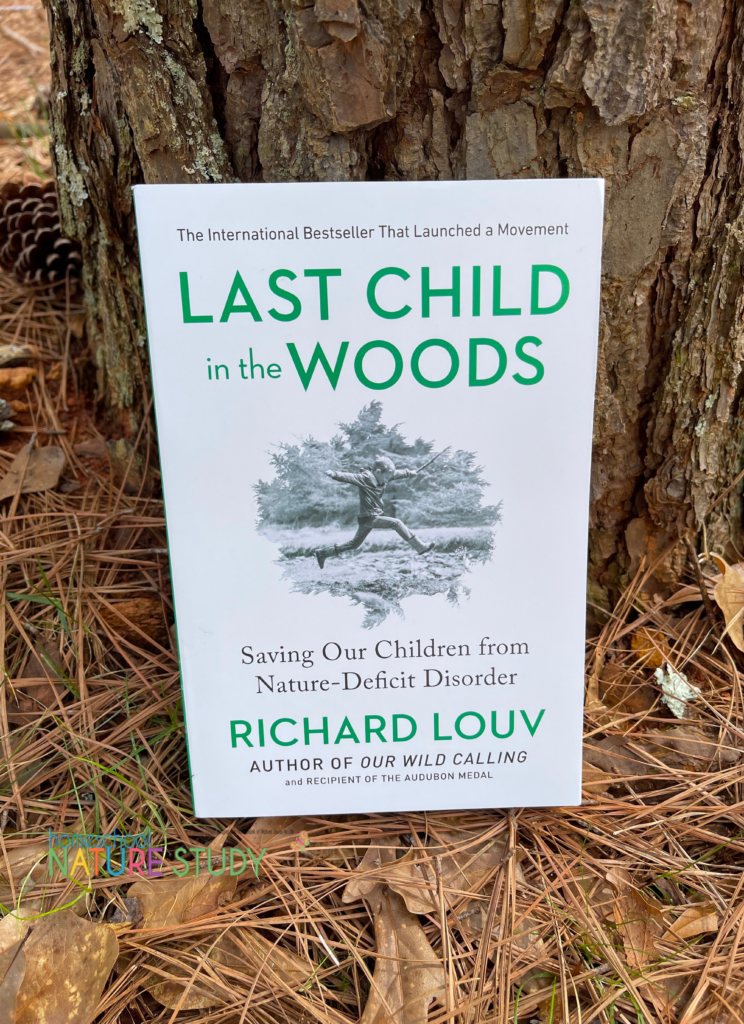
Encouragement From Last Child in the Woods
Here’s a selection of quotes from one of my favorite sections in Last Child in the Woods:
“Any natural place contains an infinite reservoir of information, and therefore the potential for inexhaustible new discoveries.”
“For some young people, nature is so abstract-the ozone layer, a faraway rain forest-that it exists beyond the senses.”
And the best of all from this section:
“For a whole generation of kids, direct experiences in the backyard, in the tool shed, in the fields and woods, has been replaced by indirect learning, through machines. These young people are smart, they grew up with computers, they were supposed to be superior-but now we know that something’s missing.”
Encouragement from Charlotte Mason
If you have read any of Charlotte Mason’s writings, she tells us what is missing from most of our young people’s educations. Charlotte Mason advocated the sort of science learning that Richard Louv encourages in this book….an education where children are exposed to and encouraged to be out in nature.
With her emphasis in the early years on nature study, Charlotte Mason is showing us how to make science meaningful to our children. It will not be some abstract idea or have a political agenda. Science really is as simple as the plan put before us by Charlotte Mason. We are the ones that make it complicated.
Benefits of Nature Study in Your Own Backyard
A nature walk can stimulate our children’s senses and their inborn desire to ask questions. One bird, one tree, one wildflower or garden flower at a time, our children will learn about their own world and neighborhood. Whether your “outdoors” is a park, a few square feet of dirt, or an acre of forest, every child has the opportunity to be exposed to some kind of natural environment.
If you live in a high-rise apartment or the weather is too bitter or too hot to be outside, bring nature to you in the form of a potted plant, a fish tank, or a collection of natural objects brought in from your time spent outdoors. (Check out my daughter’s table-top garden post on her blog at HeartsandTrees.)
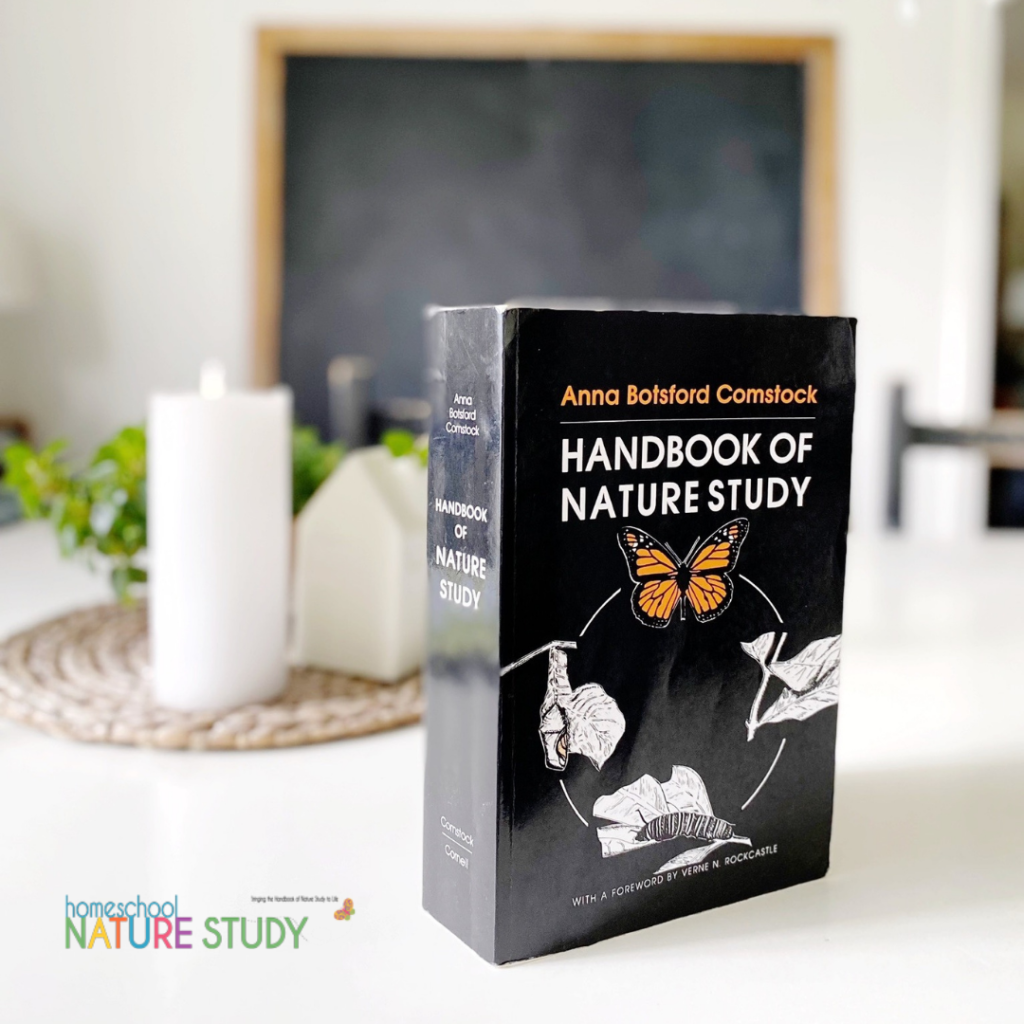
Anna Botsford Comstock in her book Handbook of Nature Study puts her thoughts this way:
“Nature study is for the comprehension of the individual life of the bird, insect, or plant that is nearest at hand.”
My eyes are wide open at all times to find ways to bring nature closer to our family. As Christians we want to appreciate the world that God made for us to live in. We want to be able to understand Him better by learning about all that He created.

Nature Study in Your Own Backyard with Outdoor Hour Challenges
To get each Friday’s homeschool nature study Outdoor Hour Challenge and for access to a continuing series of new nature studies, join us in Homeschool Nature Study Membership. With homeschool nature study membership, you will have everything you need to bring the Handbook of Nature Study to life in your homeschool.
Be inspired. Be encouraged. Get outdoors!
By Barb, June 2008

